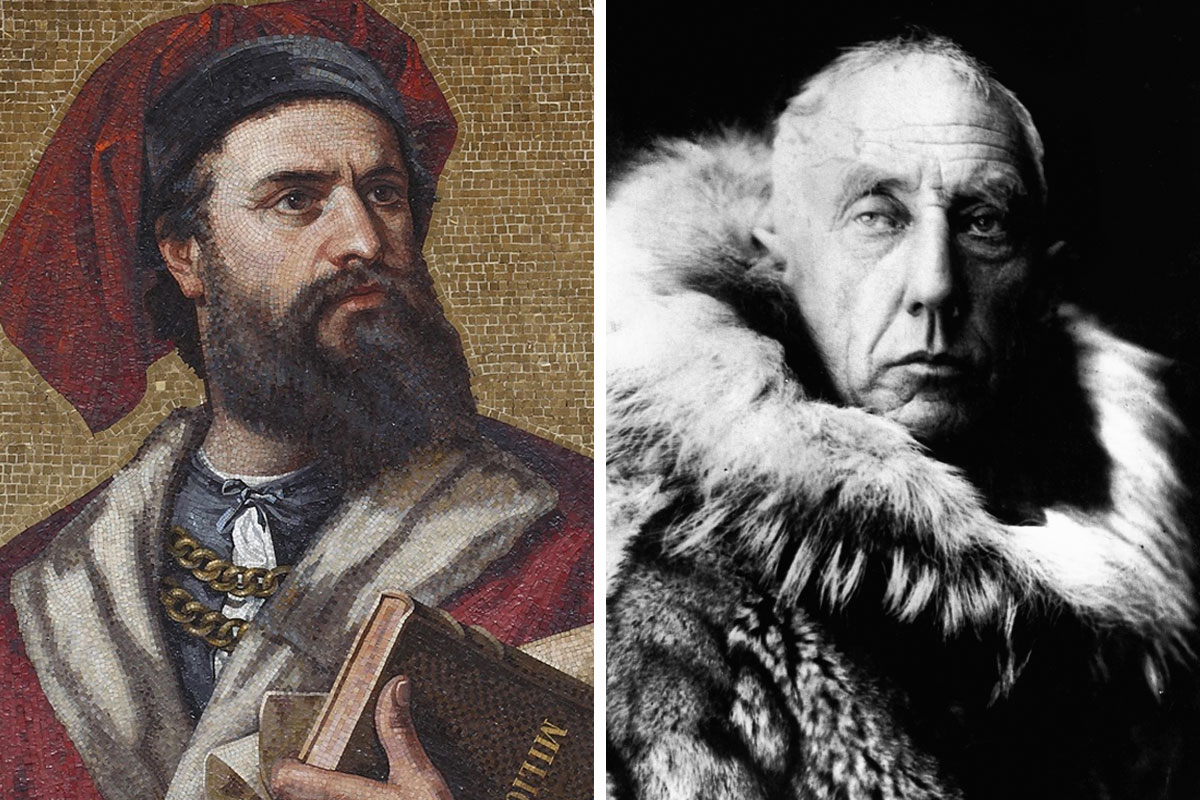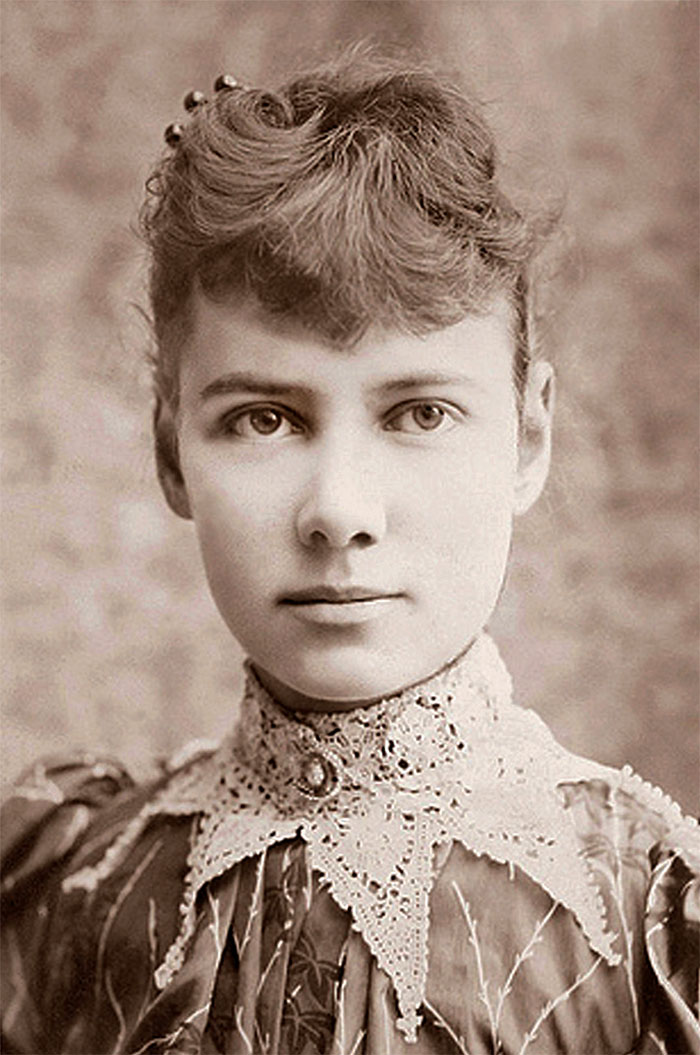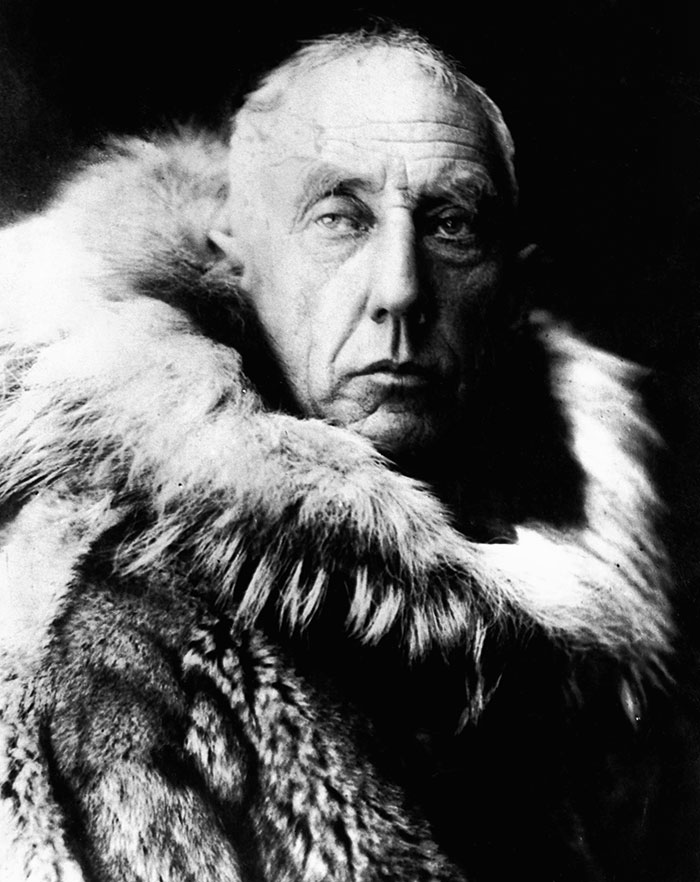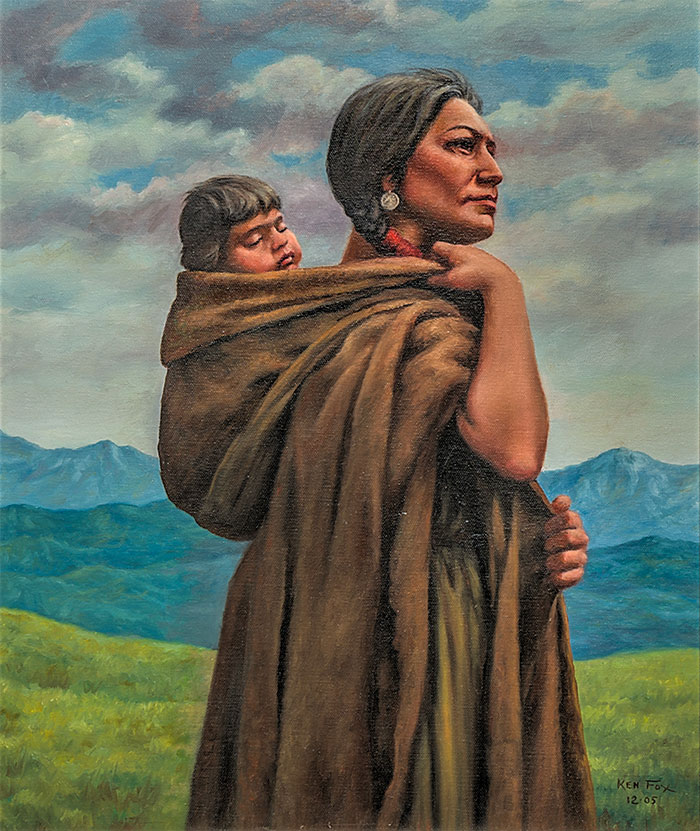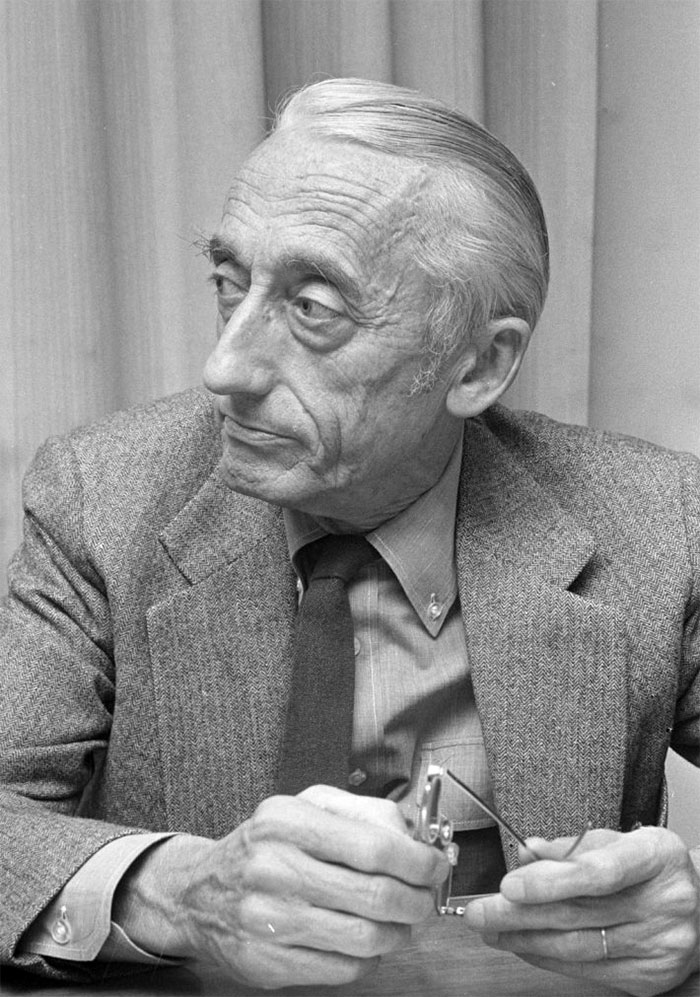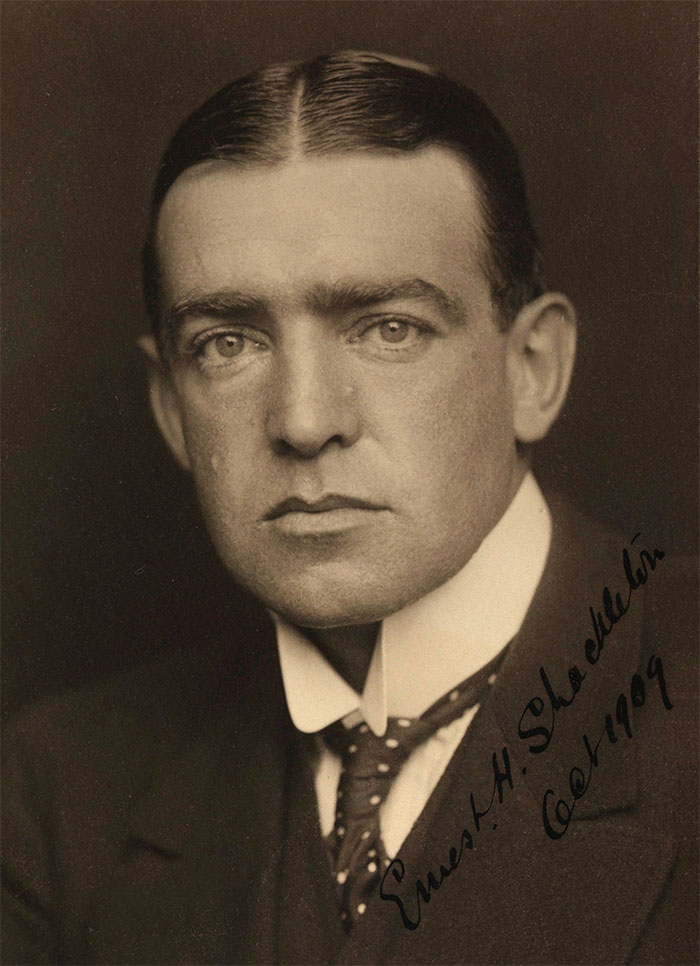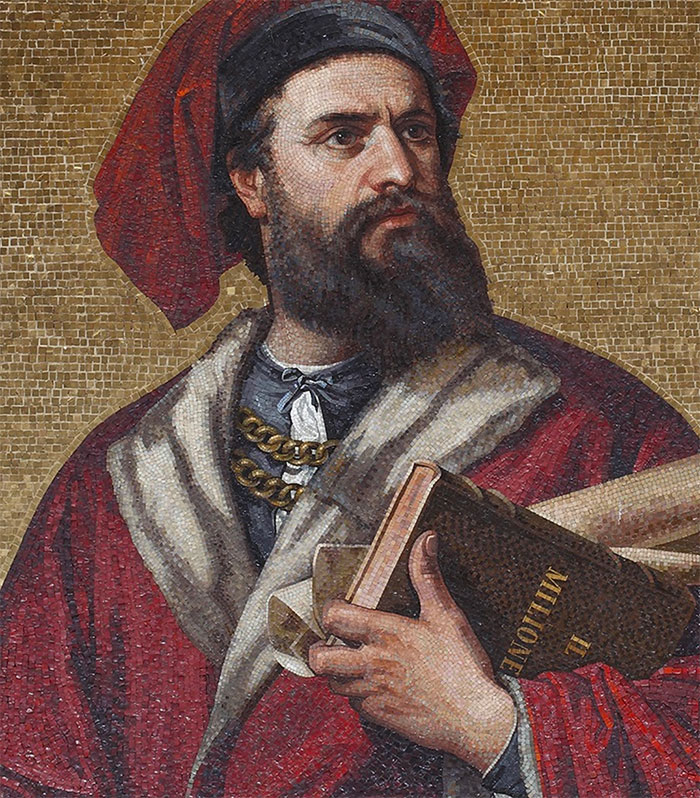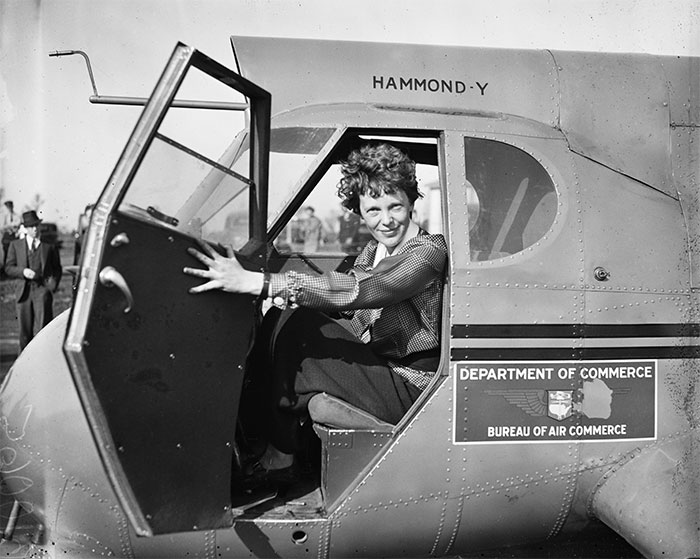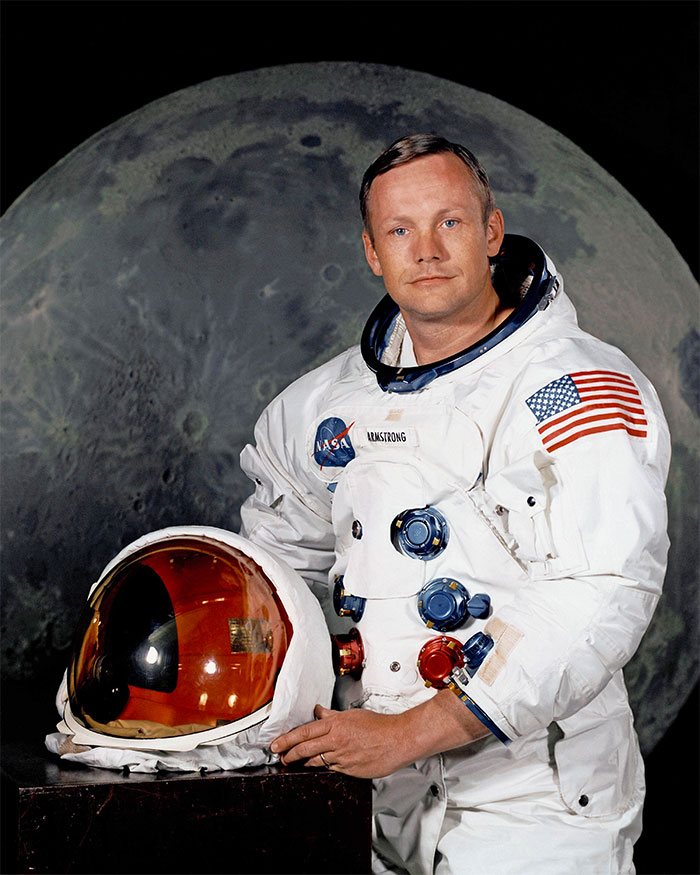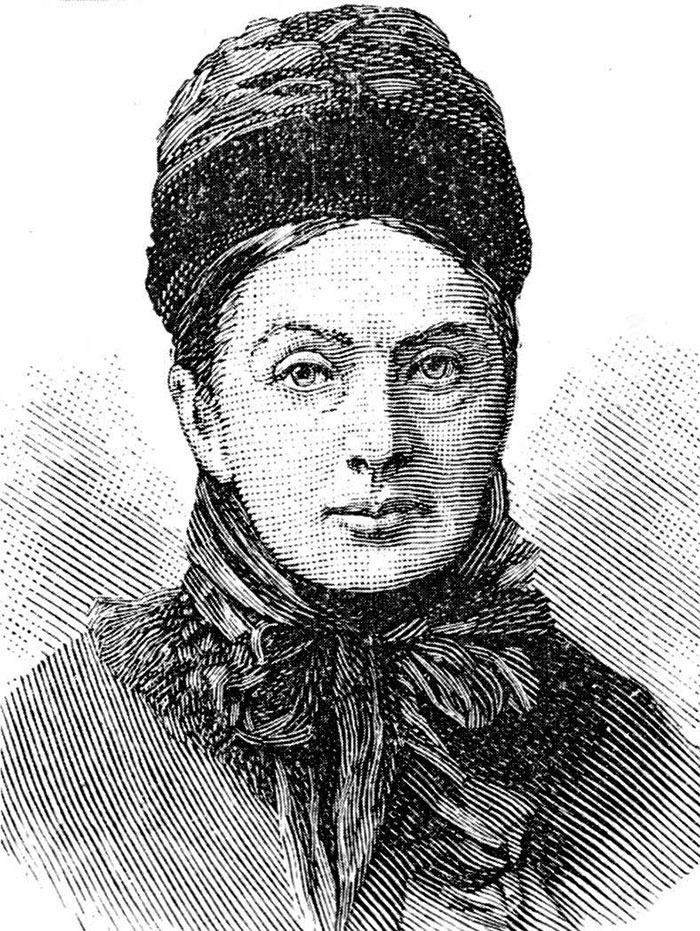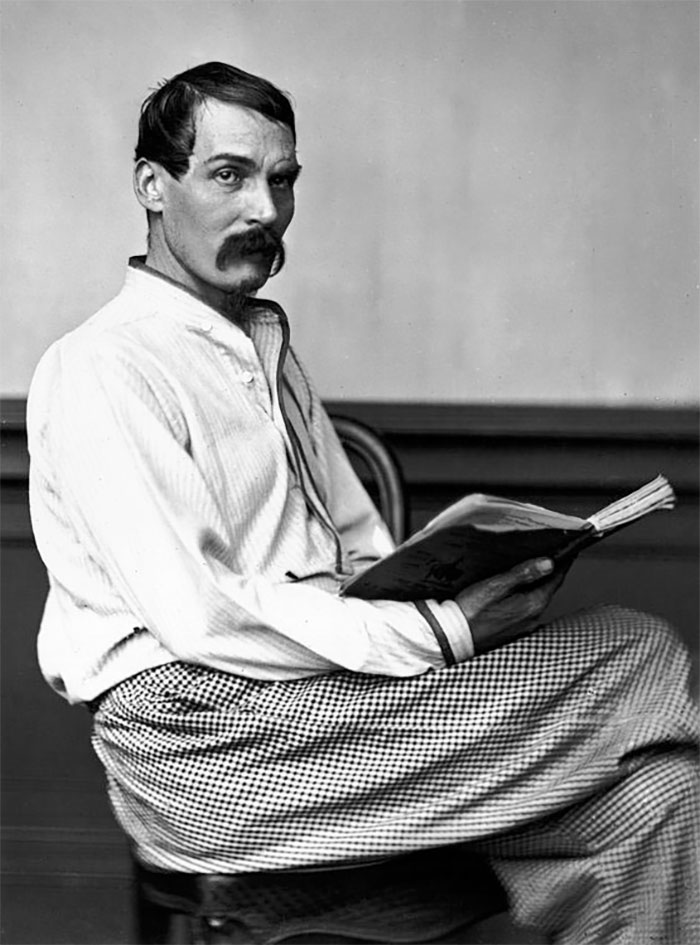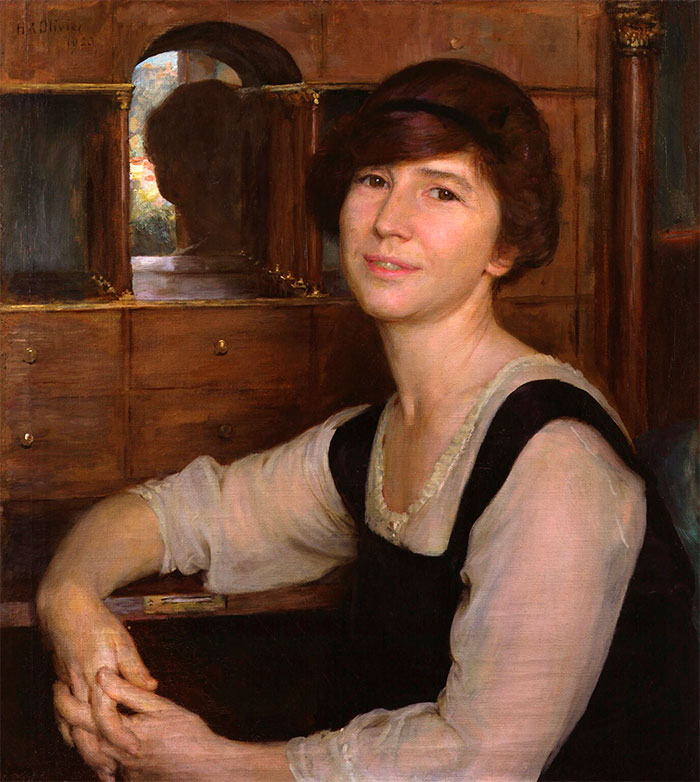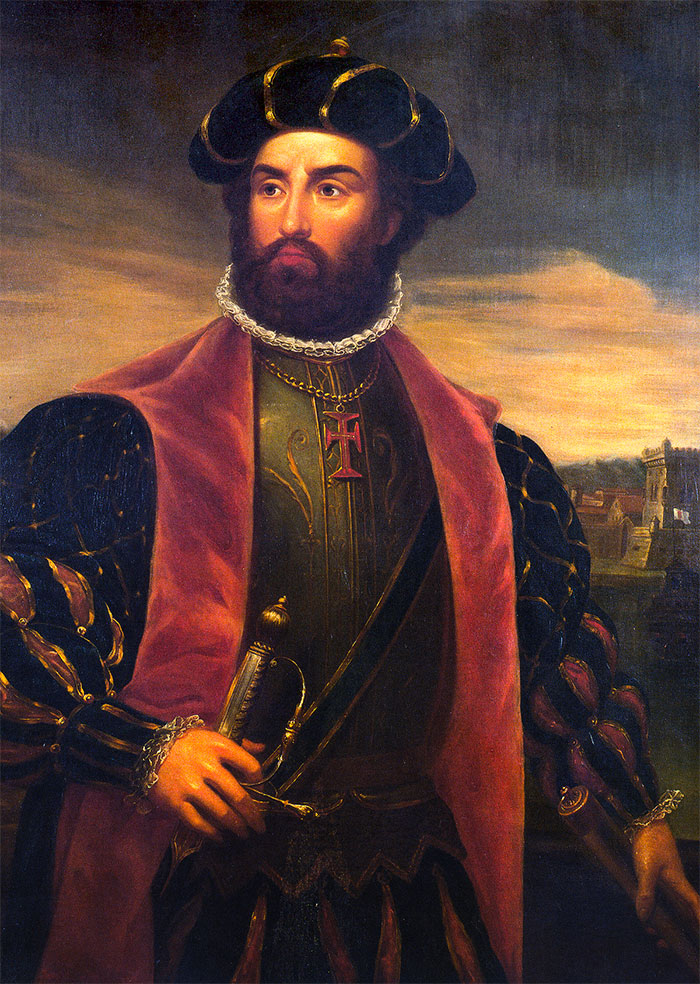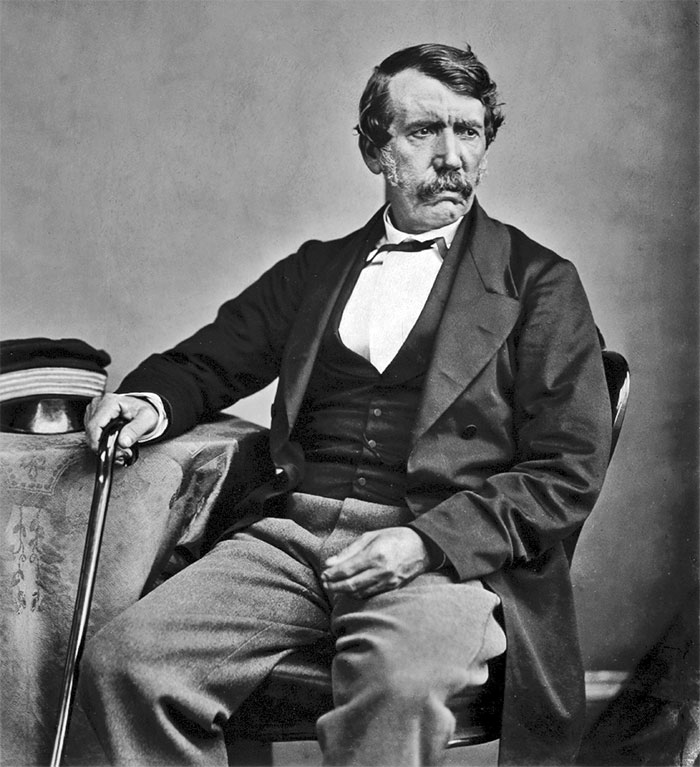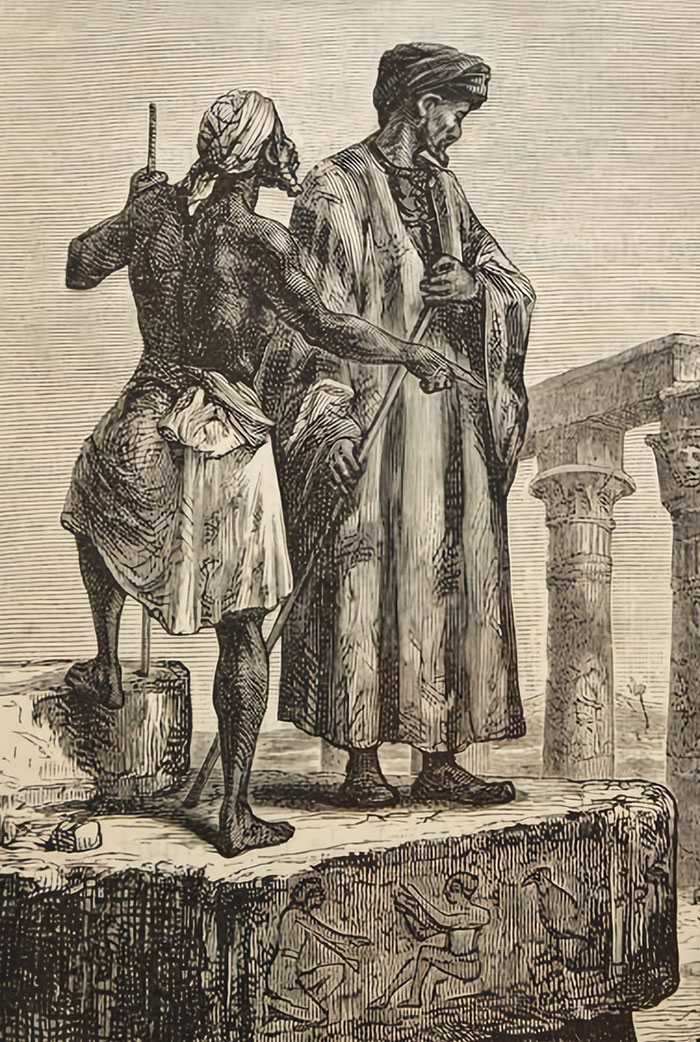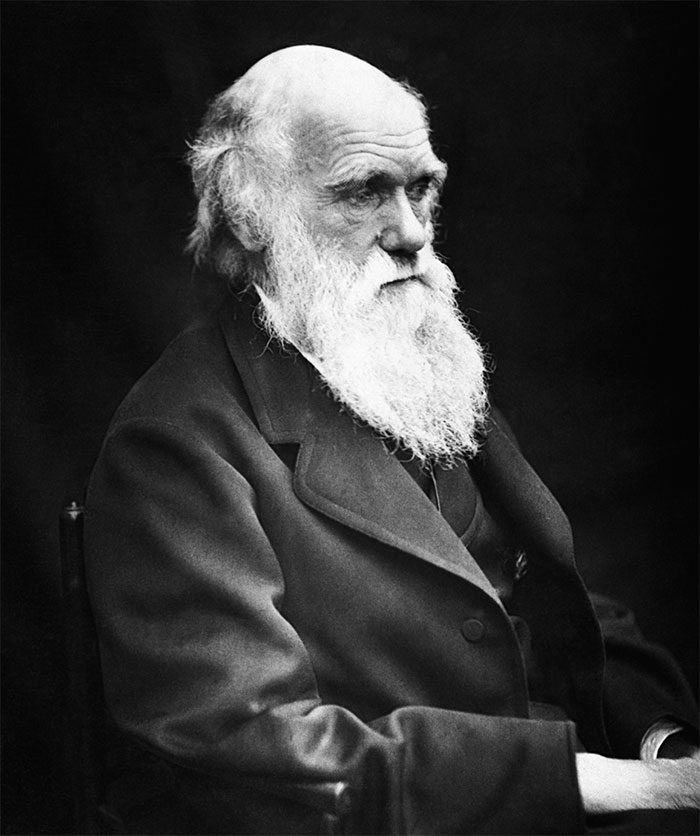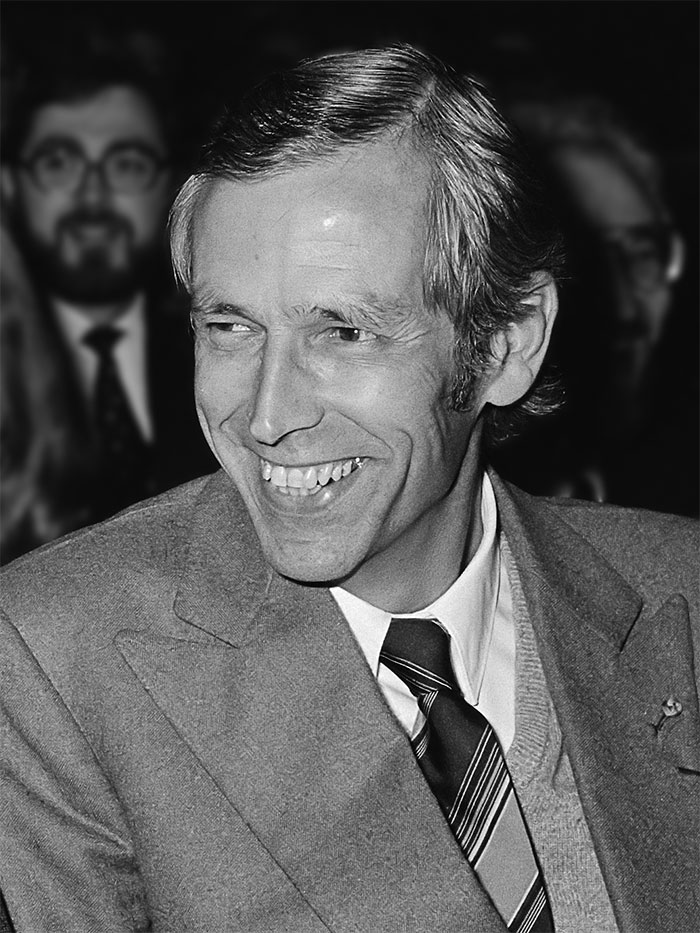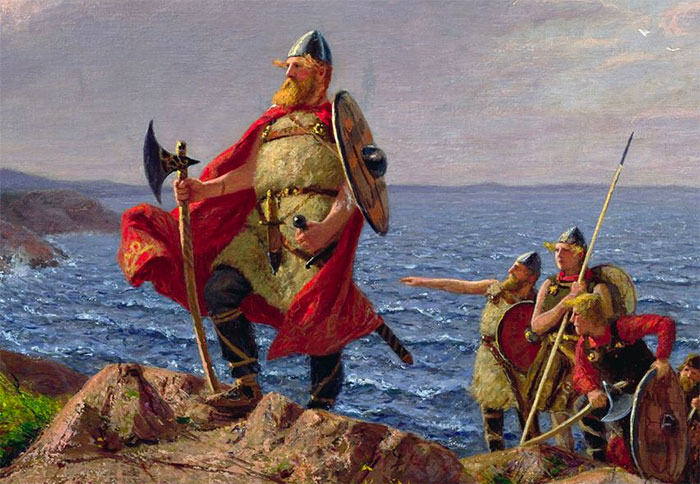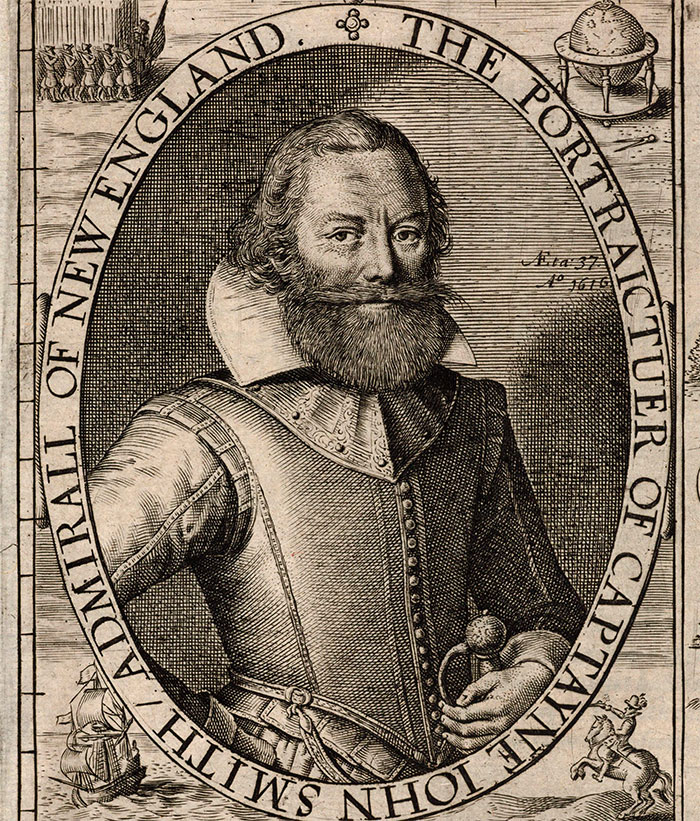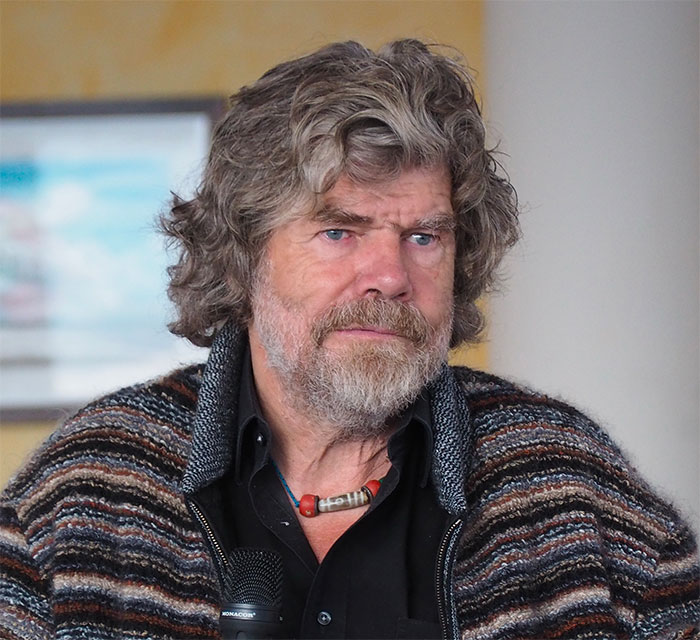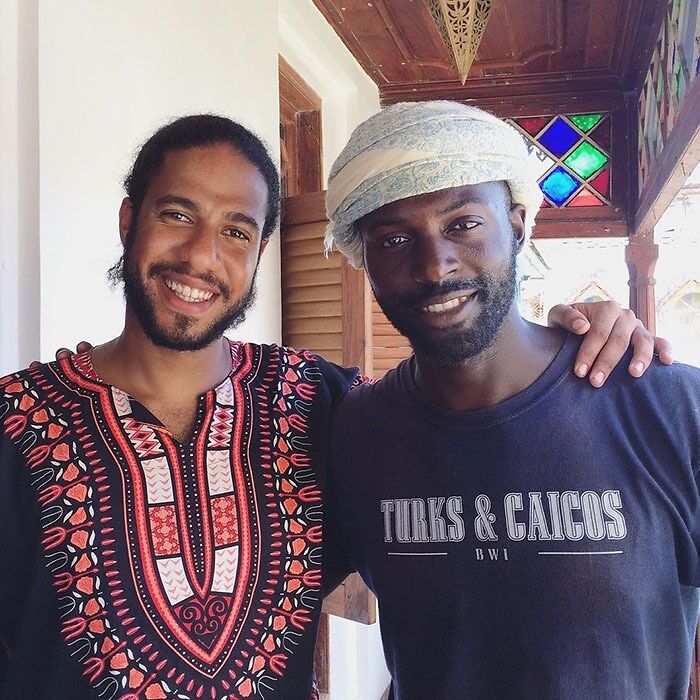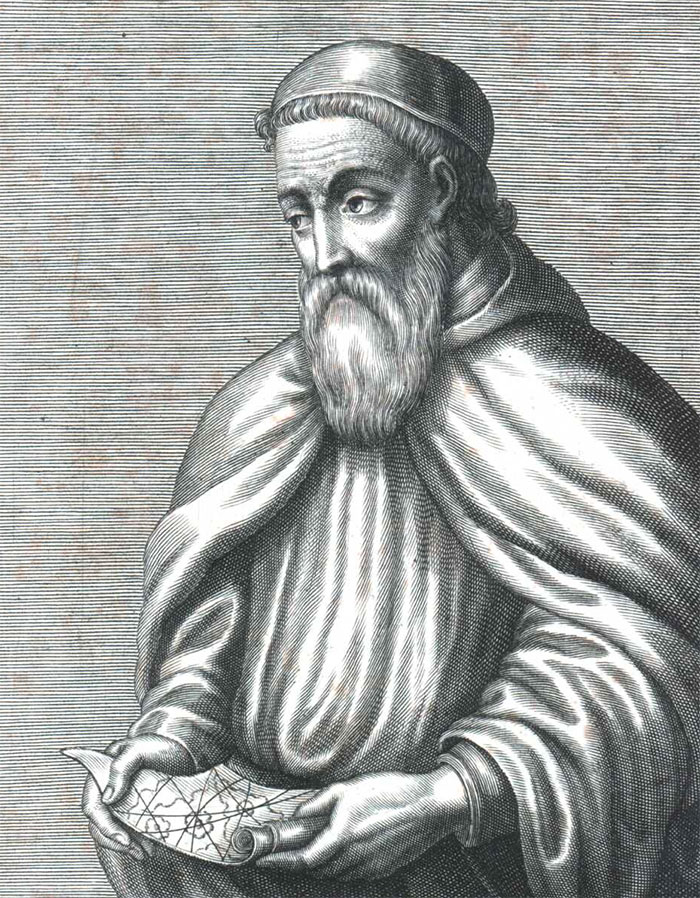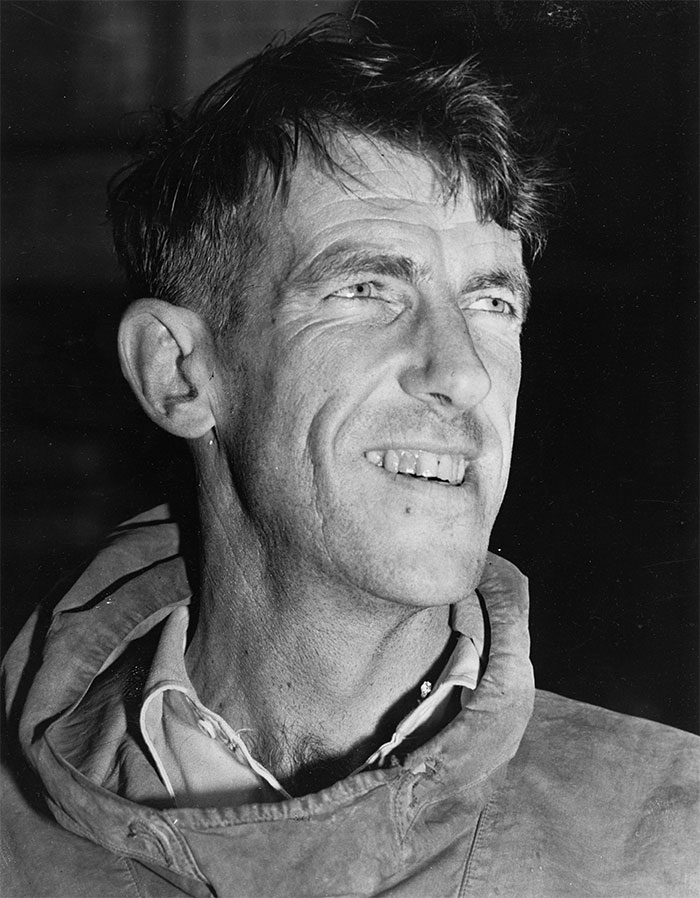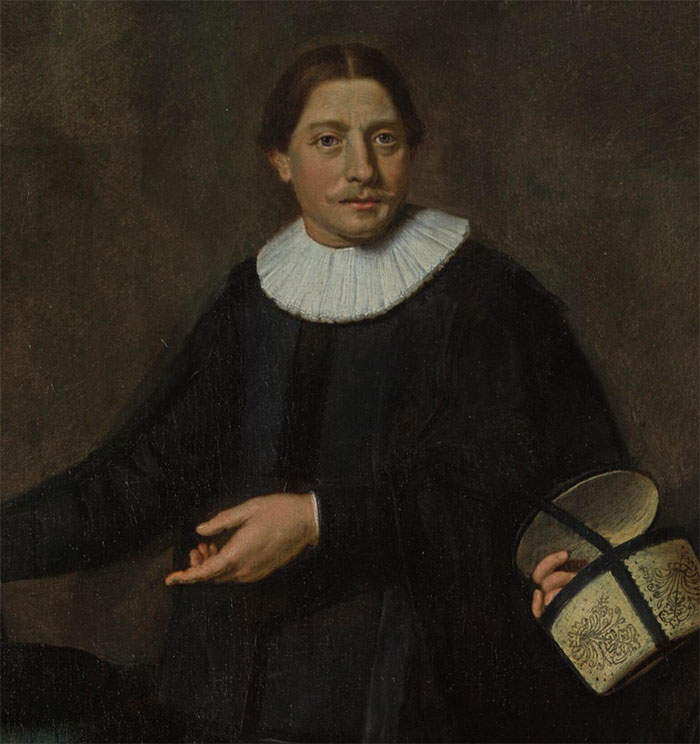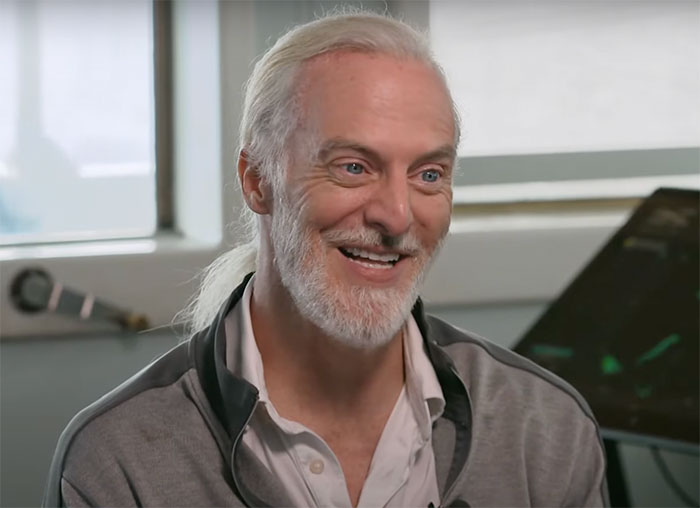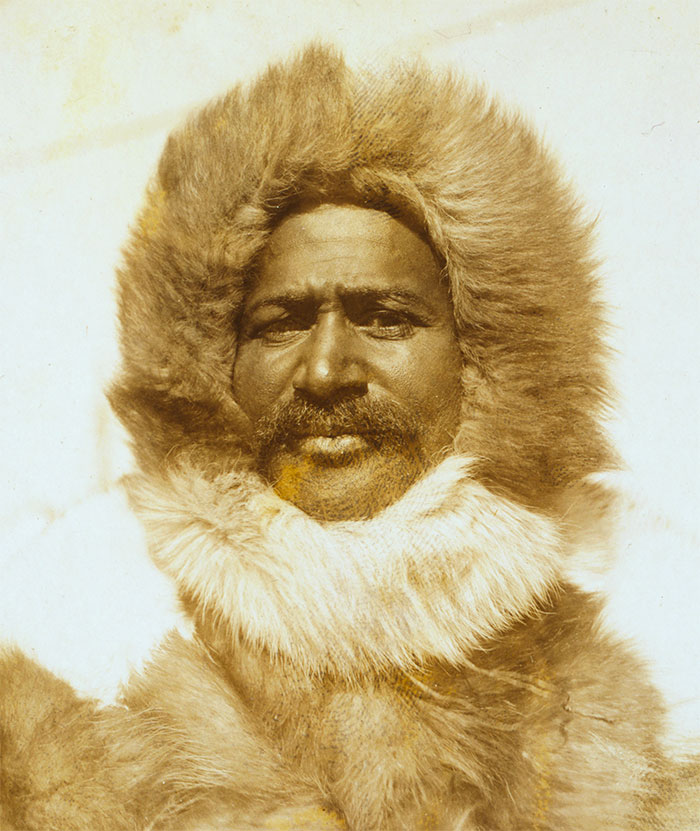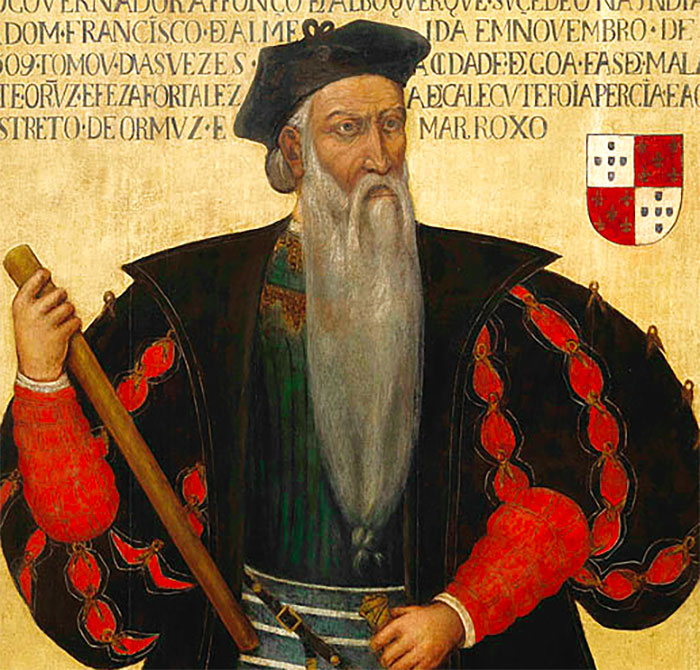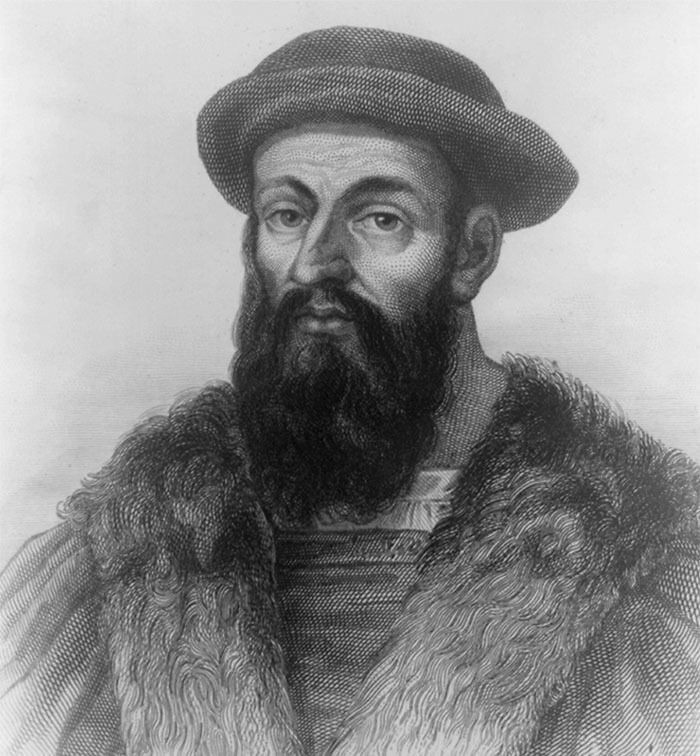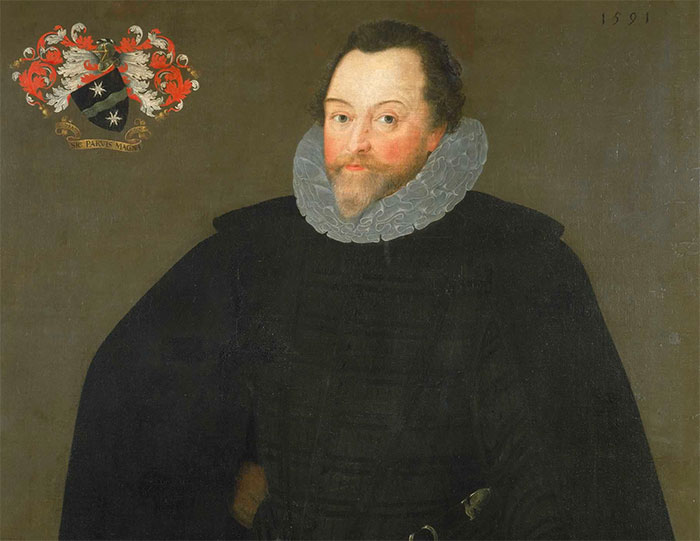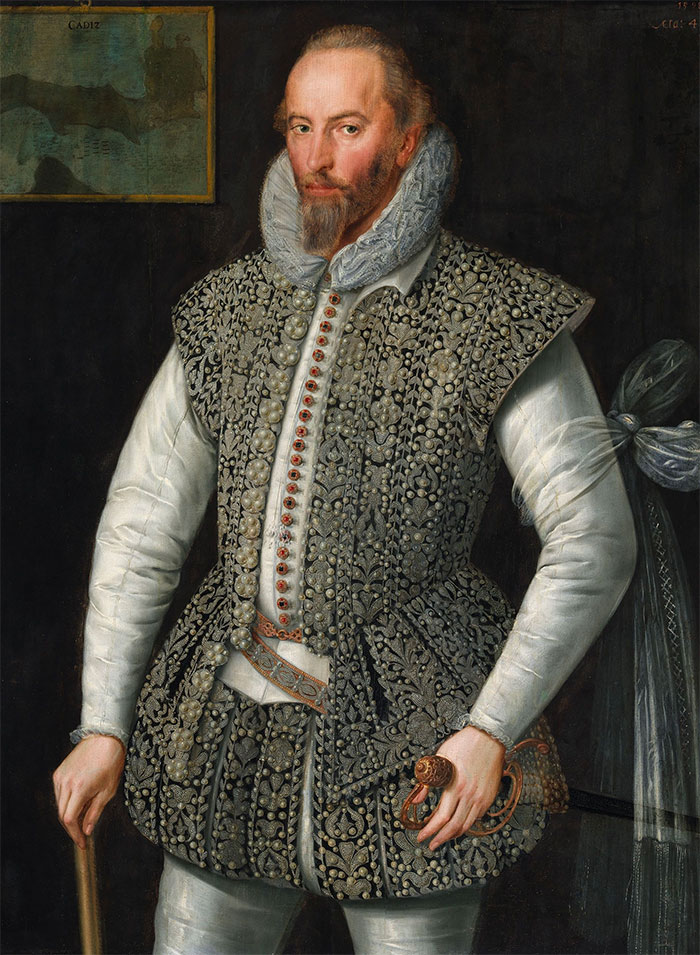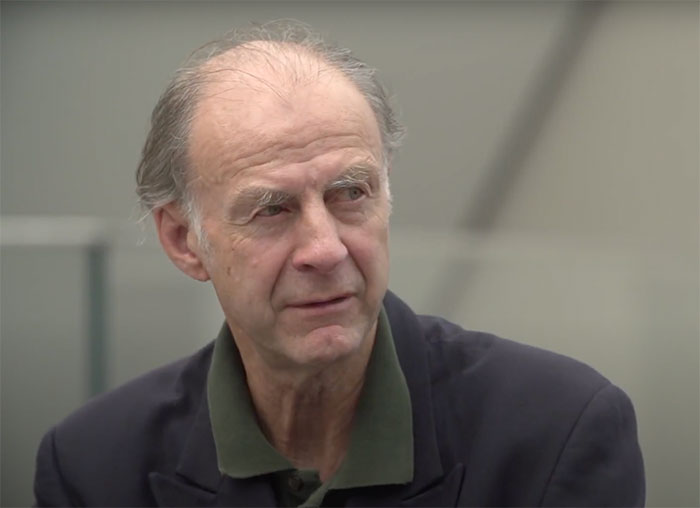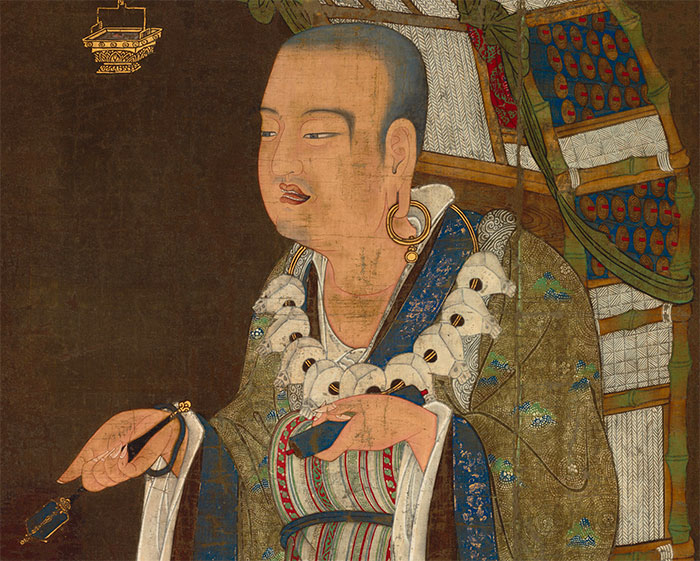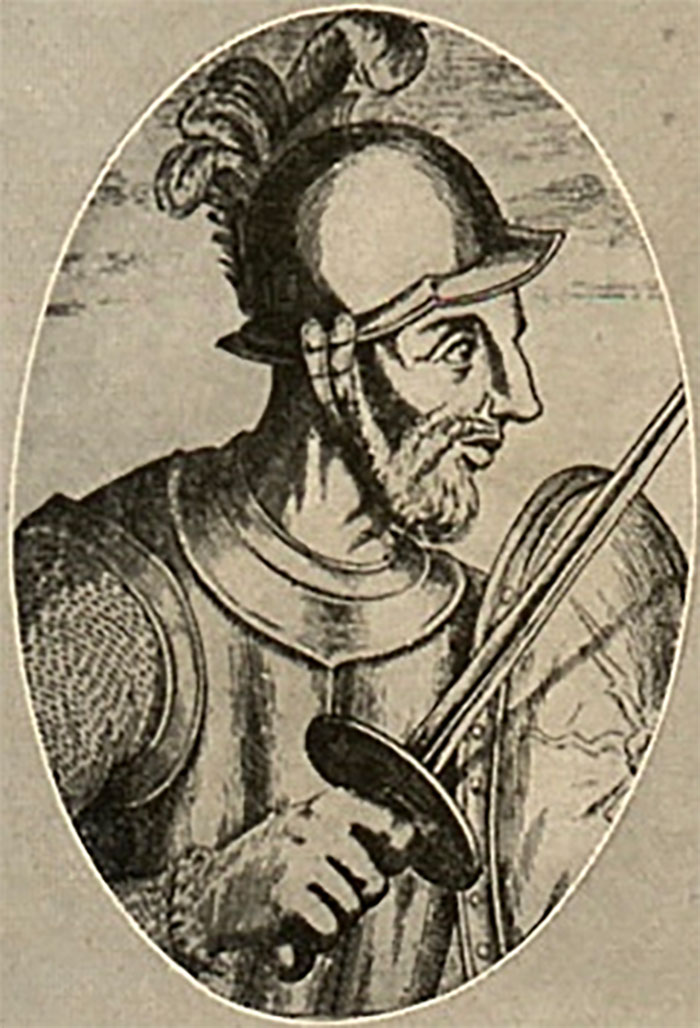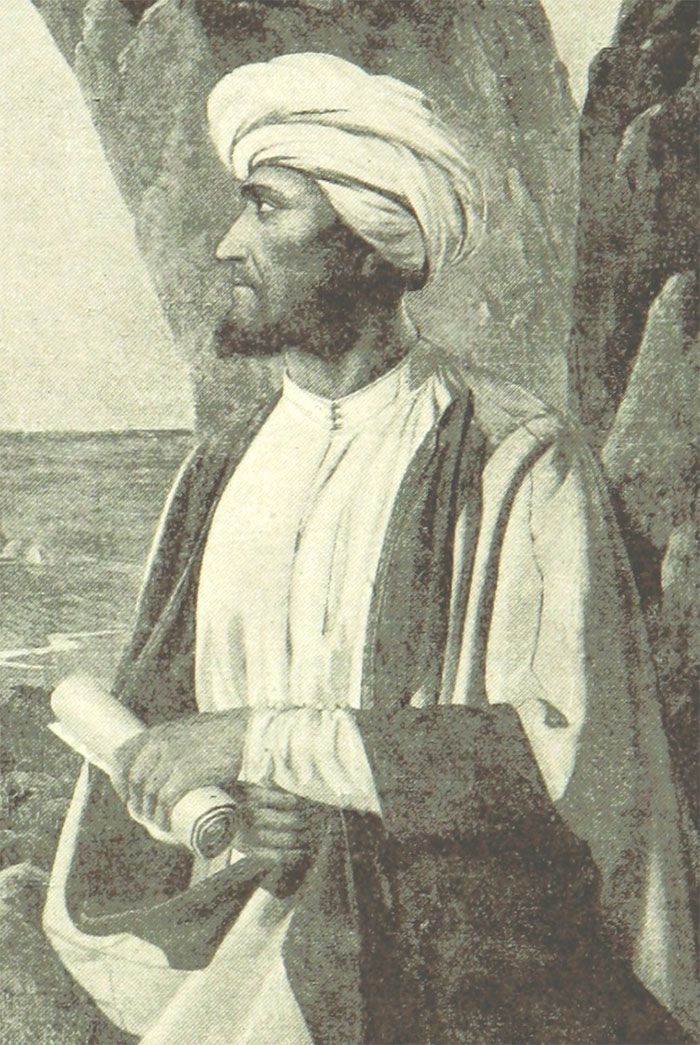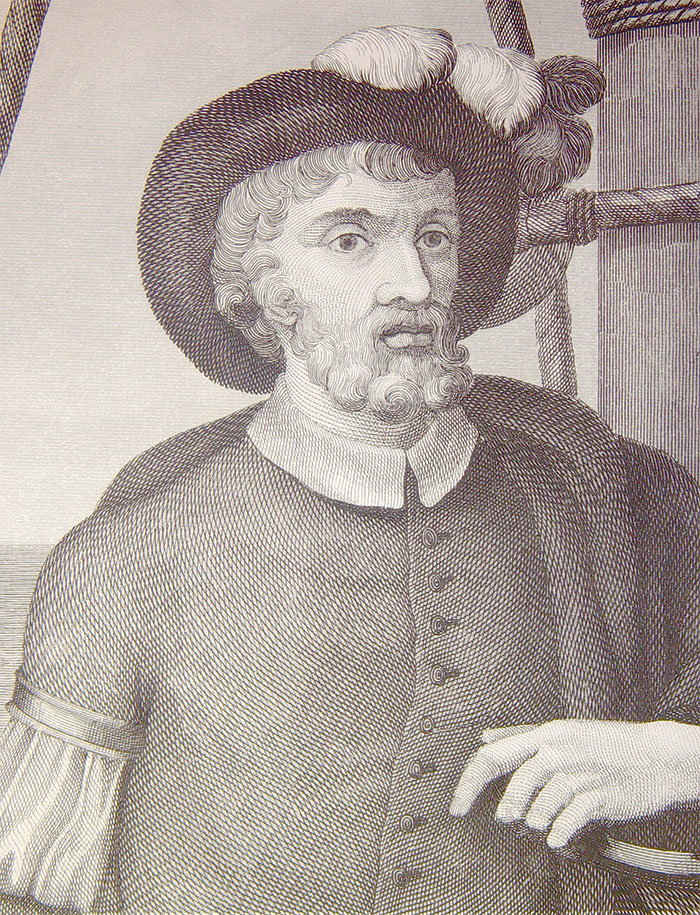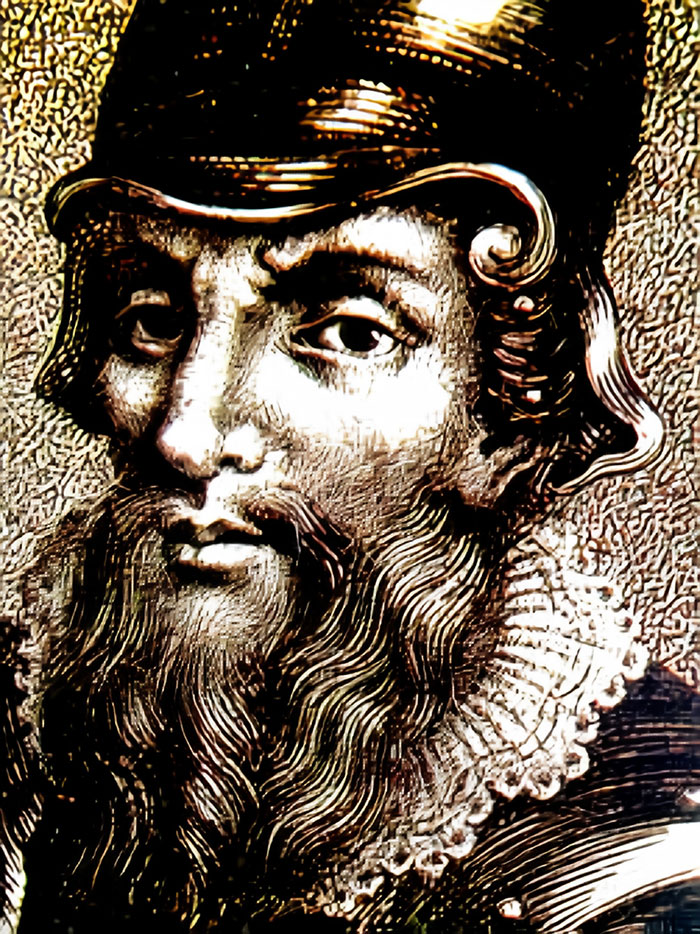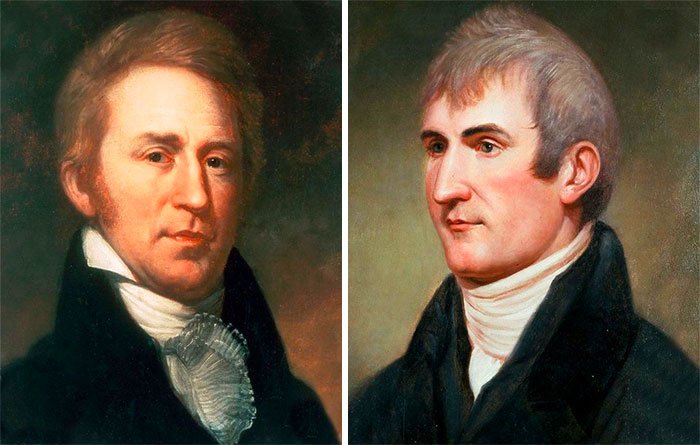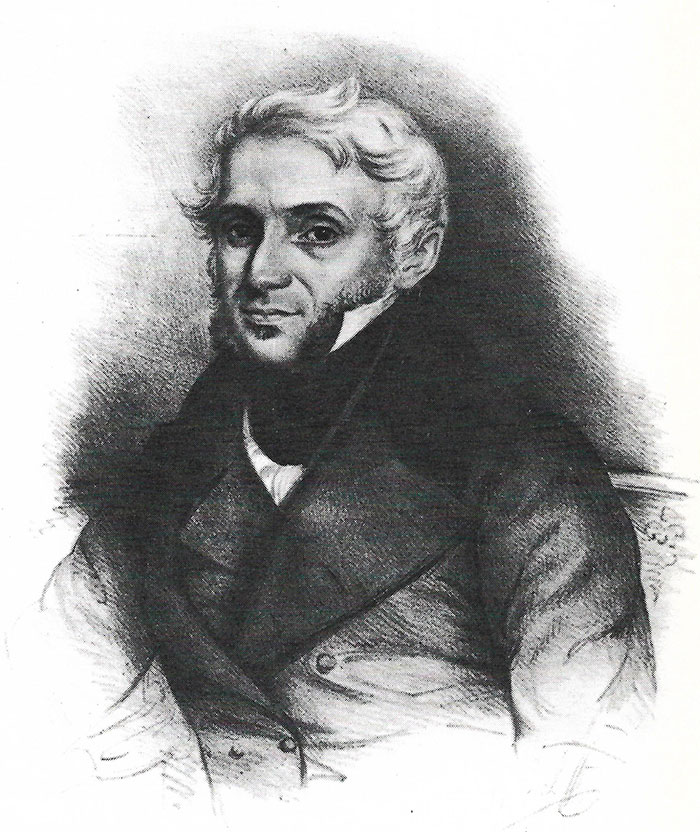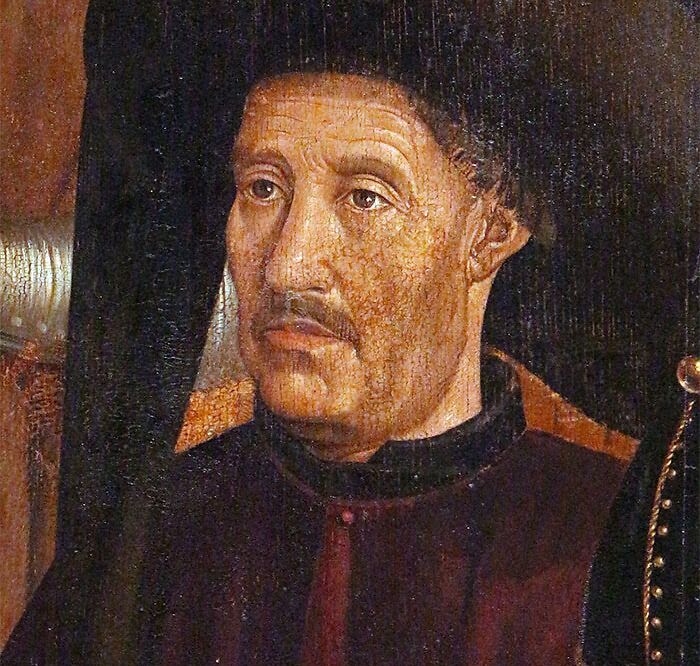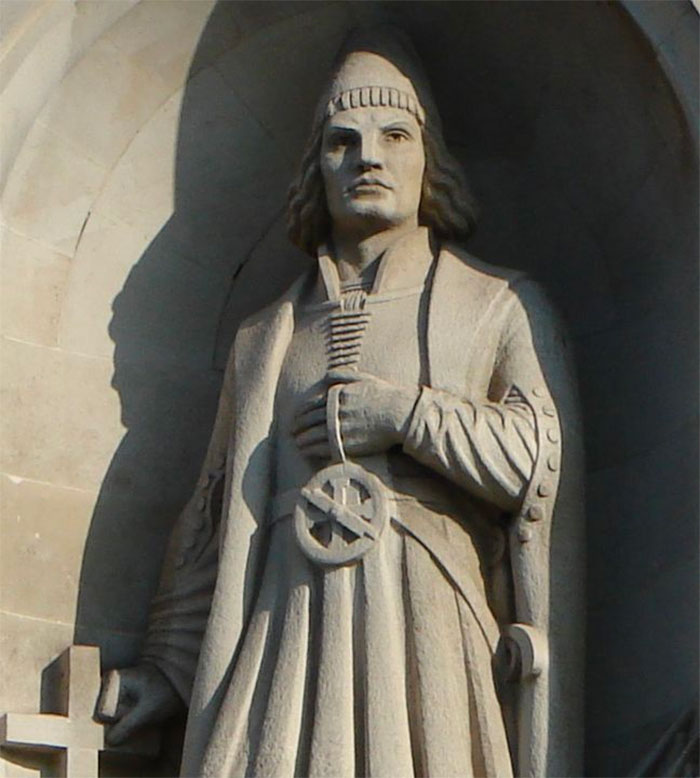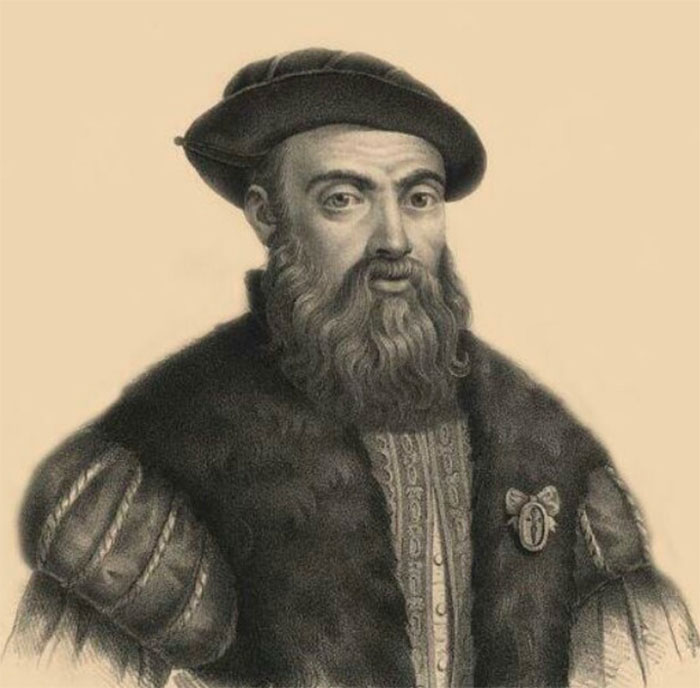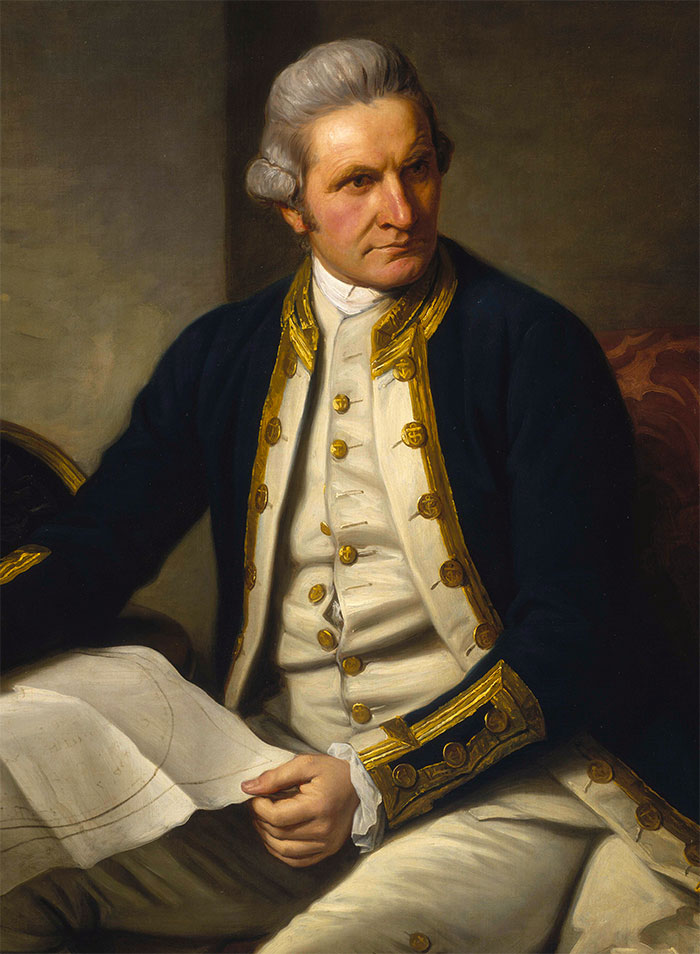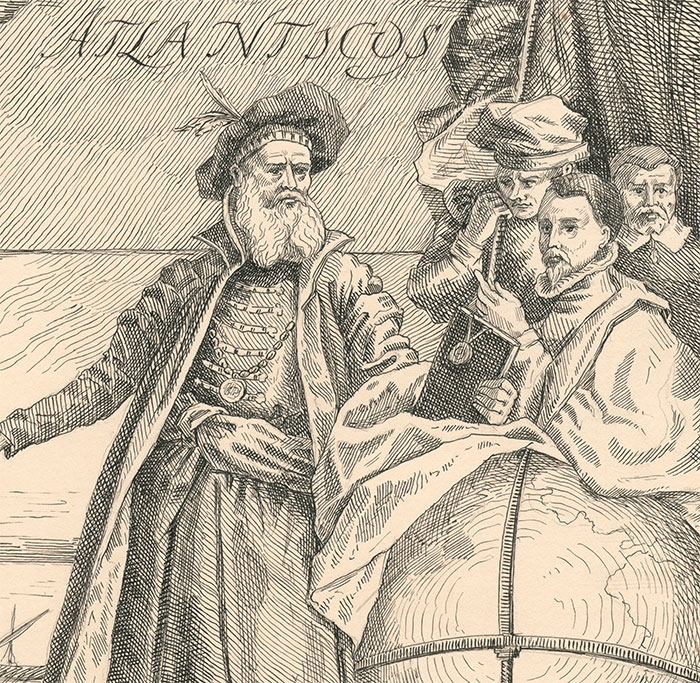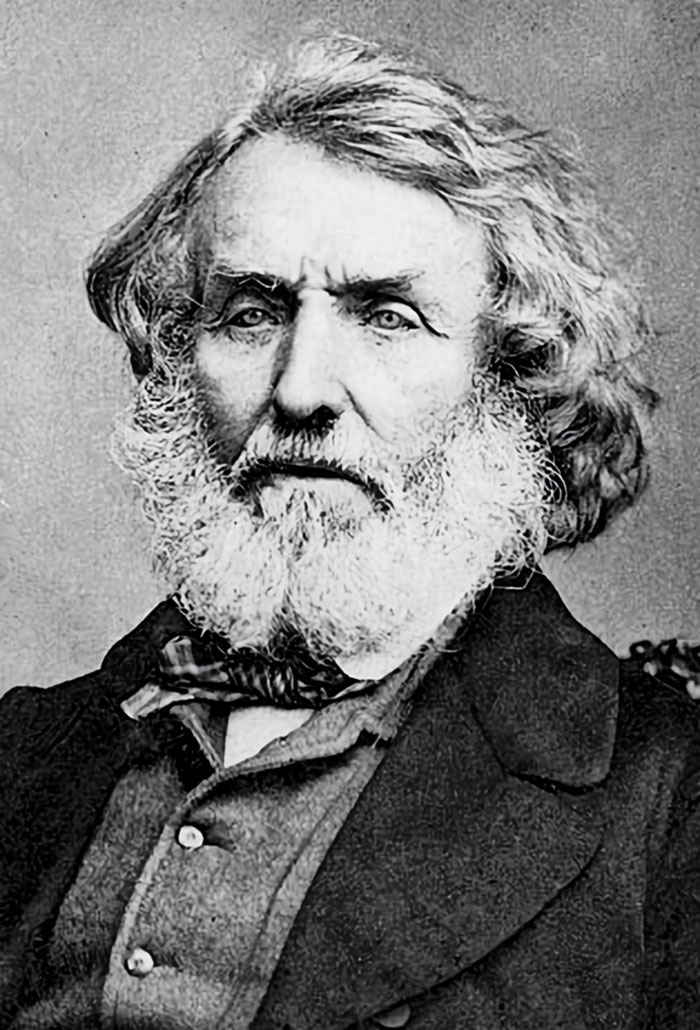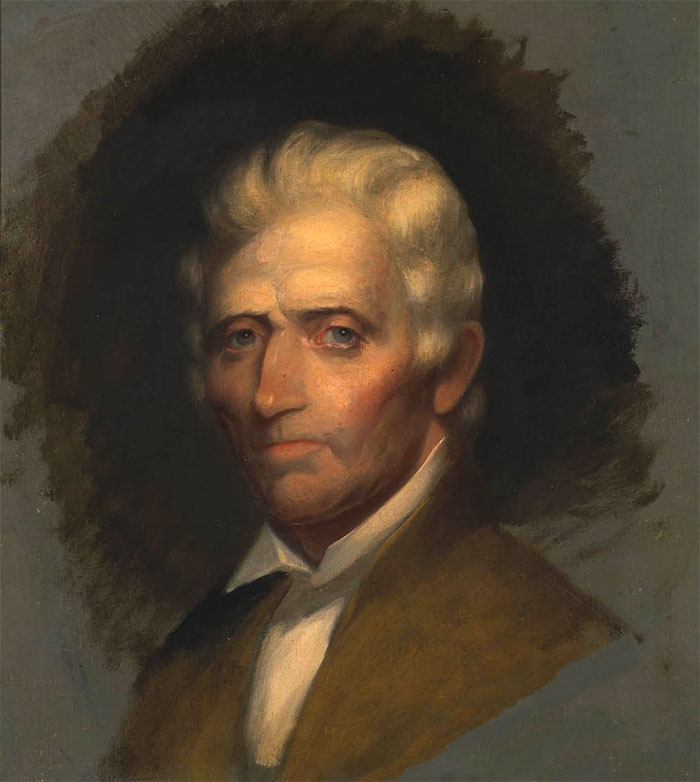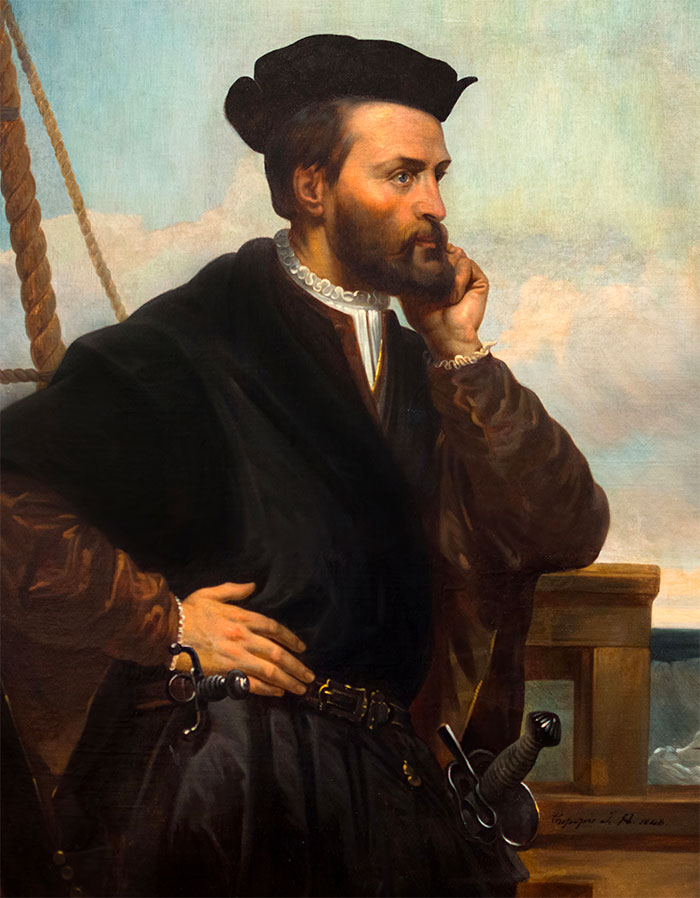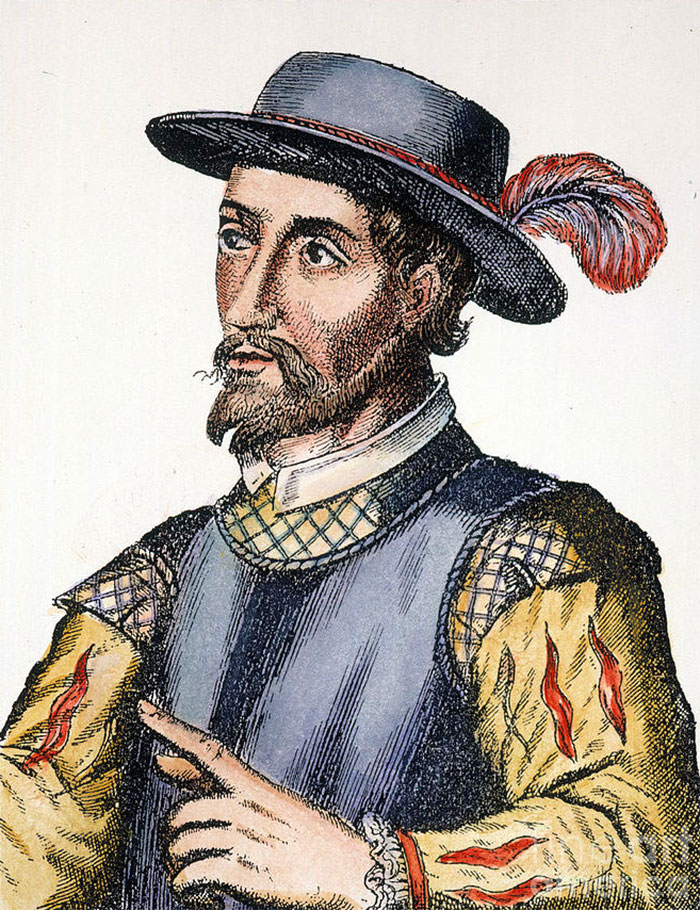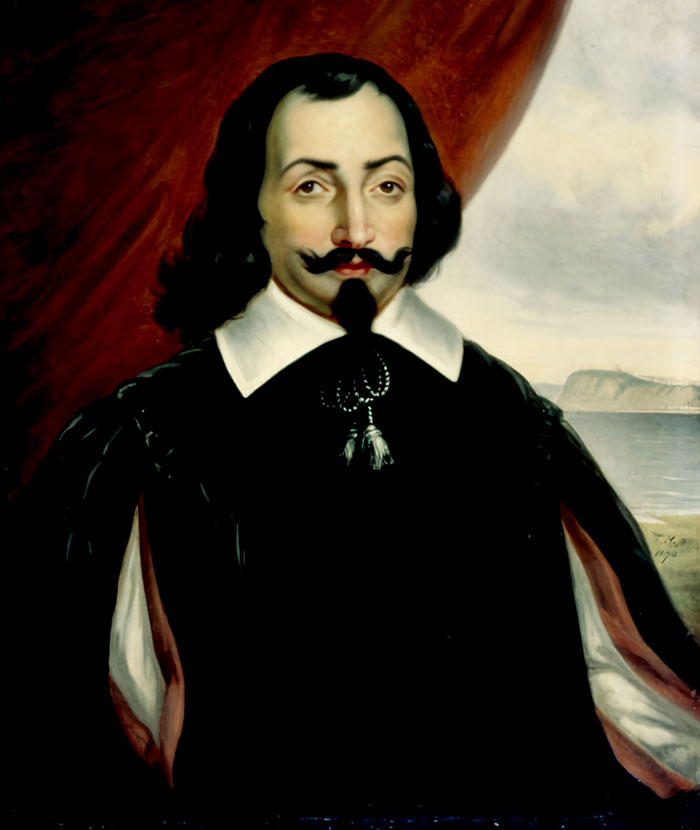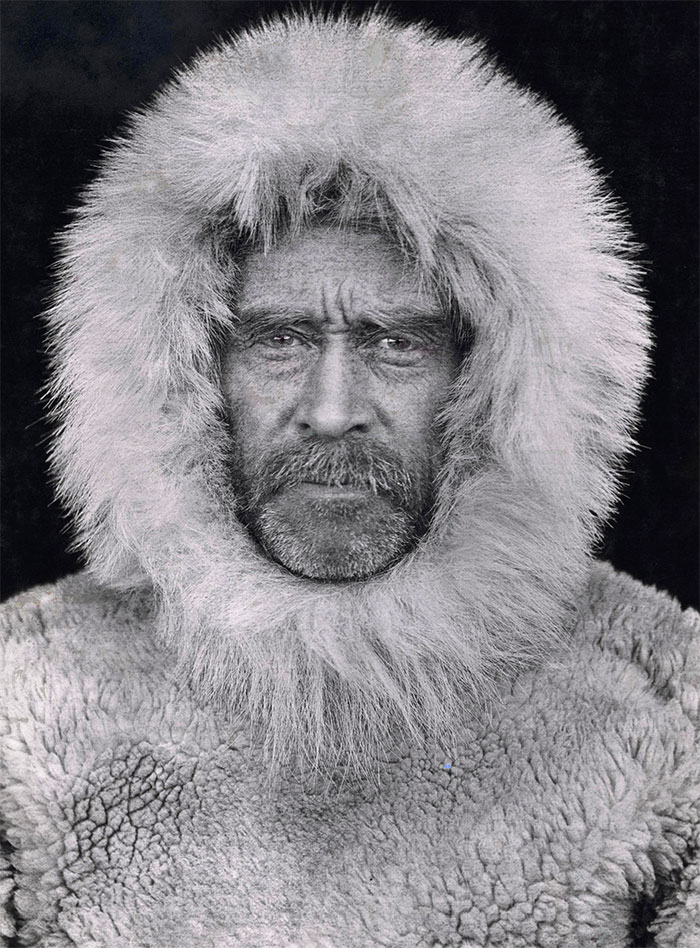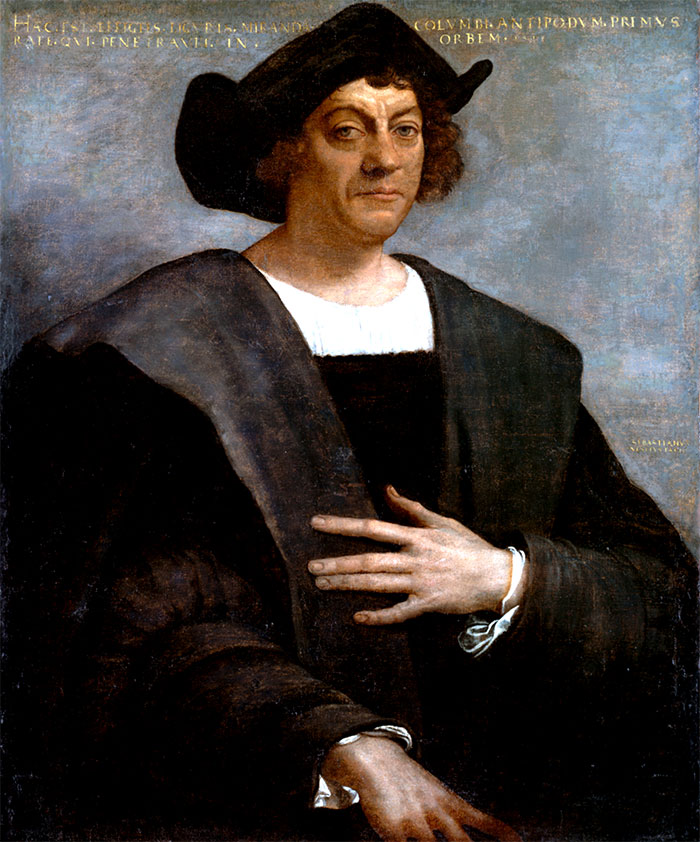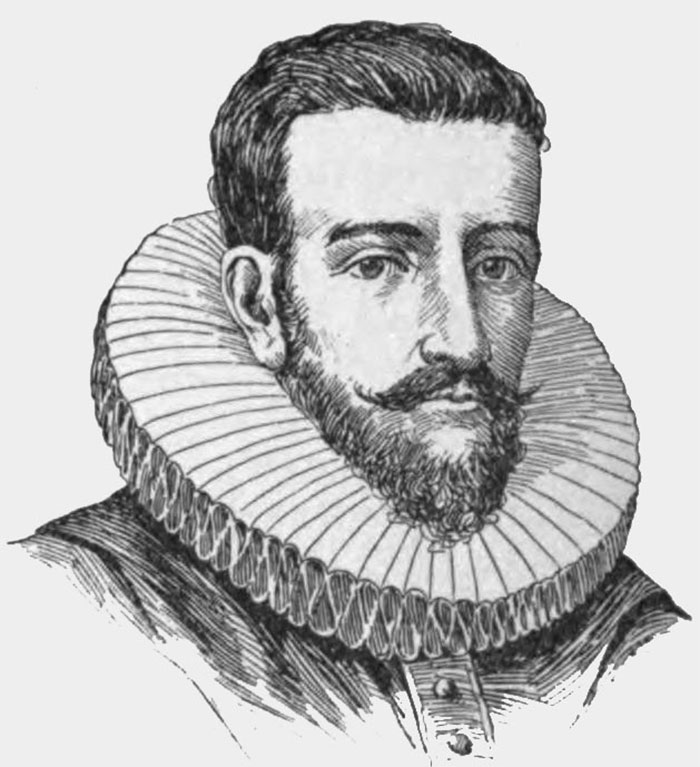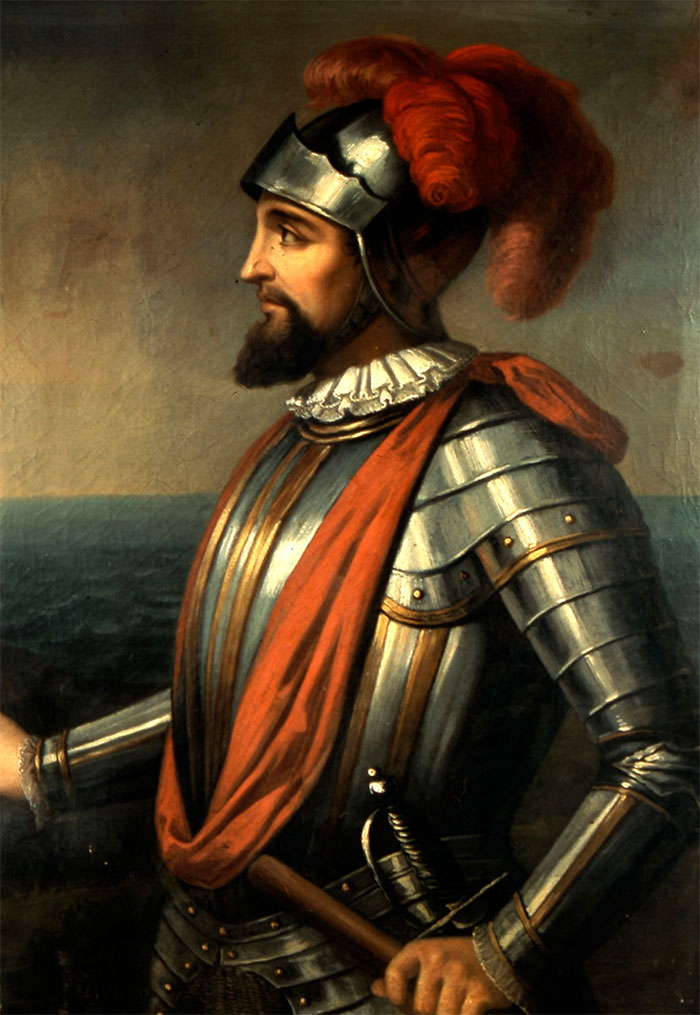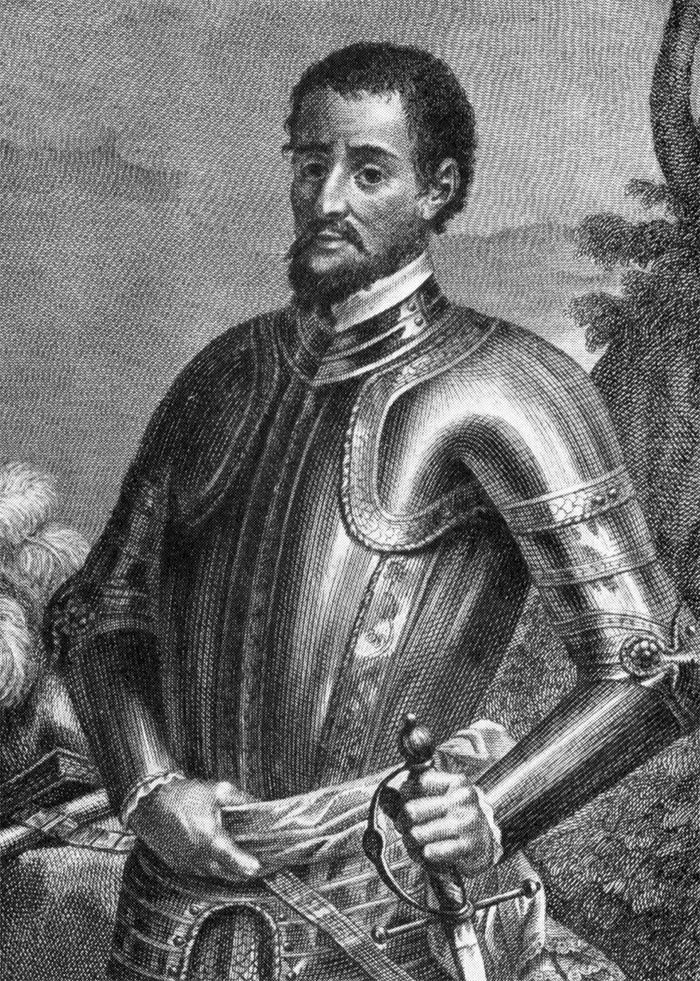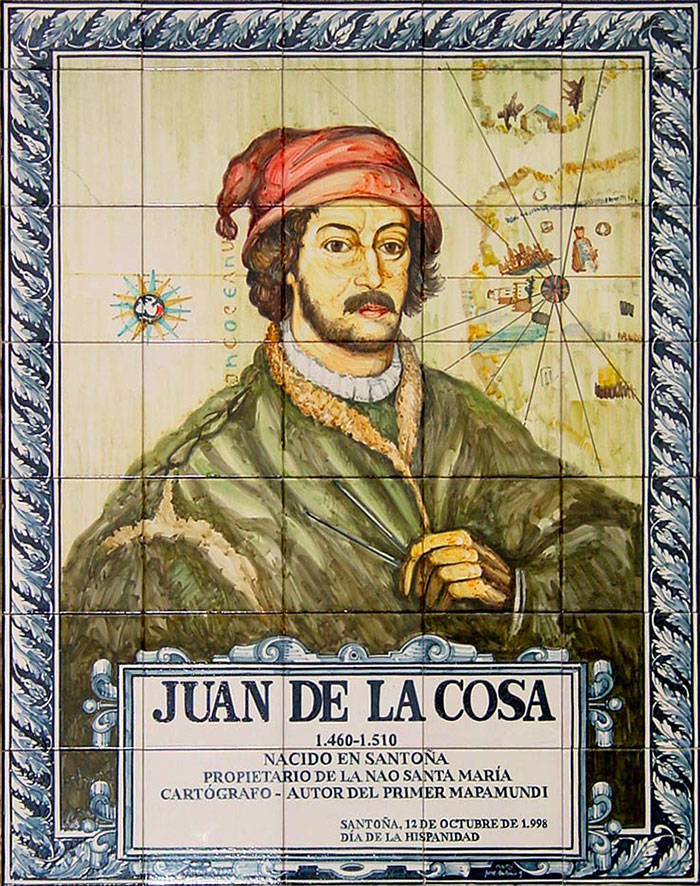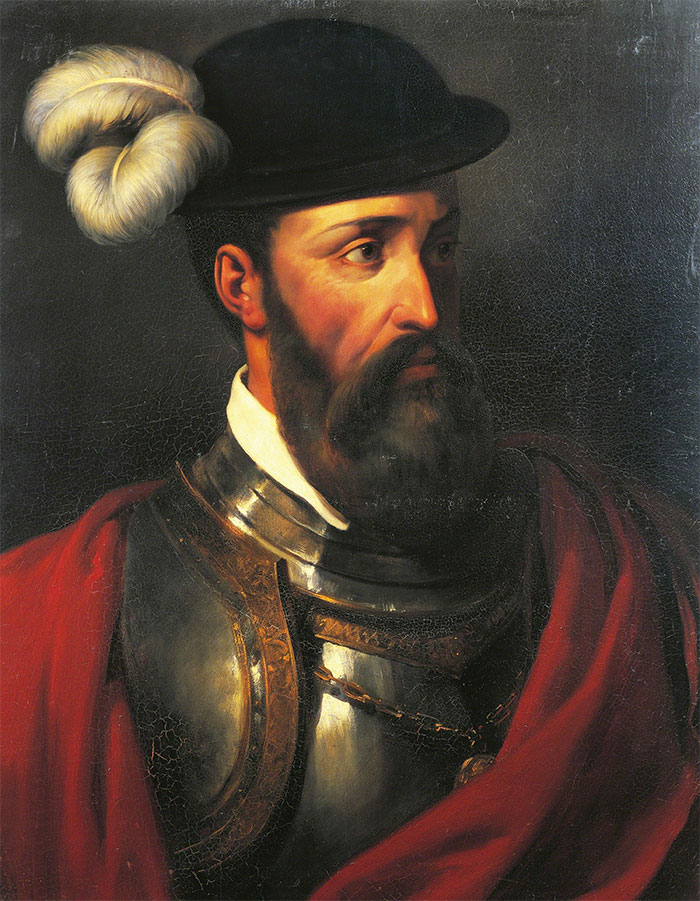In the vast human history, there existed a unique breed of individuals — they possessed a thirst for the unknown and a great desire to venture beyond the confines of familiarity. These remarkable men and women had a relentless spirit of discovery that helped broaden our knowledge of the world. So today, we’ll go on a thrilling voyage through history and talk about several such famous explorers.
They traveled to the depths of the ocean and scaled inhospitable mountains; they took to the seas in search of trade; they conquered the poles. These famous historical explorers enriched our understanding of the world. Our list includes famous European explorers such as Marco Polo, whose travels across the ancient Silk Road bridged the gap between East and West, and Ferdinand Magellan, who led the first circumnavigation of the globe. We’ll also look at the exploits of famous female explorers, such as Amelia Earhart and Nellie Bly, who undertook solo voyages.
These famous explorers embody the essence of human curiosity and ambition. Their feats will remind you that everyone has the potential to conquer the unknown and embark on their own grand adventures.
Let’s take a look at their extraordinary journeys.
This post may include affiliate links.
Nellie Bly
In 1888, Nellie Bly set off to break the fictional record of traveling the world in 80 days. She completed the journey in 72 days, traveling by ship, train, and other means of transportation, becoming a symbol of female empowerment.
She also went undercover as a patient at a mental health asylum to expose the horrible and harsh conditions there
Roald Amundsen
Roald Amundsen (1872–1928) was a famous Norwegian explorer. He is credited as the first person to reach the South Pole. He embarked on his first Arctic expedition in 1897. Over the years, he spent several years studying polar exploration, gathering supplies, and assembling a team to explore the South Pole. He finally set sail in June 1910 and reached the South Pole in December 1911 after a grueling journey. Amundsen and his team planted the Norwegian flag at the pole and named it “Polheim.”
He is considered as one of the greatest polar explorers of all time. His meticulous planning and attention to detail set a standard for future expeditions.
Sacagawea
Sacagawea was a Native American woman who helped with the Lewis and Clark exploration of Western America in the early 19th century. She was around 16 years old when she joined Lewis and Clark as an interpreter and guide. She traveled thousands of miles with her baby boy, who became the youngest member of the expedition.
Jacques Cousteau
Jacques Cousteau (1910–1997) was a renowned French naval officer, explorer, and conservationist. He is best known for his extensive contributions to marine exploration and his efforts to raise awareness about the importance of ocean conservation.
He is also considered a pioneer of scuba diving and underwater filmmaking. He co-developed the Aqua-Lung, a self-contained underwater breathing apparatus that revolutionized diving by allowing divers to explore underwater environments for extended periods. Cousteau’s celebrated work includes The Silent World (1956) and the TV series The Undersea World of Jacques Cousteau (1968–1976).
I remember that our whole family (when I was a kid) would never miss another episode of 'The Undersea World'.
Ernest Shackleton
Ernest Shackleton (1874–1922) was a great polar explorer from Ireland. He led the Imperial Trans-Antarctic Expedition from 1914 to 1917 to cross the Antarctic continent from one coast to the other via the South Pole. The trip is considered to be legendary. First, they lost their ship, the Endurance. He and his crew survived on floating ice for several weeks before reaching Elephant Island. They then set out on a small lifeboat and sailed 800 miles across the treacherous Southern Ocean to organize a rescue mission to save the rest of the crew on Elephant Island. Miraculously, the entire crew was rescued.
"Just sit right back and you'll hear a tale, a tale of a fateful trip, that started off in Ireland aboard this tiny ship".
Marco Polo
Marco Polo (1254–1324) is one of the most famous explorers in history. He was a Venetian merchant who traveled along the Silk Road. He reached China, where he served as an official in the court of the Mongol ruler Kublai Khan for several years. He also explored Mongolia, India, and Southeast Asia. His fascinating travels are chronicled in the book, The Travels of Marco Polo.
He was captured in the battle between Venice and Genoa in 1296. While imprisoned, Polo is believed to have dictated the book to his fellow cellmate named Rustichello. The book described the vast wealth and technology he encountered during his travels, which inspired future European explorers, such as Christopher Columbus, to understand the world beyond Europe.
Amelia Earhart
In 1932, Amelia Earhart became the first woman to fly solo across the Atlantic Ocean. The American aviator mysteriously disappeared during a flight in 1937.
Neil Armstrong
Neil Armstrong was the first person to walk on the moon on July 20, 1969. His famous phrase “That’s one small step for man, one giant leap for mankind,” is now an iconic expression of triumph against all odds.
Isabella Bird
Isabella Bird’s adventures began at the age of 23 in 1854, when she took a trip to America. She went on to explore Iran, China, India, Australia, Hawaii, Japan, Vietnam, and Korea. She took to photography and published several books on her journey.
Richard Francis Burton
Richard Francis Burton (1821–1890) was an English explorer known for his extensive travels and adventurous spirit. He explored India, Africa, and the Middle East during the 19th century and developed a remarkable aptitude for speaking several languages. He made a pilgrimage to Mecca in disguise, which was a dangerous endeavor for a non-Muslim at the time.
His travels inspired his numerous books and translations of literature. His candid writing often covered taboo subjects and drew criticism. Nevertheless, his contributions to geographical knowledge, linguistics, and cultural understanding remain significant.
Freya Stark
Freya Stark (1893–1993) was a British explorer who made extensive travels to the Middle East during the early 20th century. She traveled to Beirut, Lebanon, Syria, Iran, Iraq, and Yemen and became fluent in multiple languages. Stark documented her experiences in numerous books such as The Valleys of the Assassins (1934), A Winter in Arabia (1940), and The Southern Gates of Arabia (1936).
Vasco Da Gama
Vasco da Gama was a famous historical explorer who lived from around 1460 to 1524. He is best known for being the first European to successfully sail directly from Europe to India, opening up the trade route. Da Gama played a crucial role in expanding Portuguese influence in the region. He also served as Viceroy of India from 1524 until his demise later that year.
David Livingstone
David Livingstone (1813–1873) is regarded as one of the most famous European explorers. He was a Scottish physician who explored Africa extensively and documented its geography, natural resources, and potential for commerce. He also discovered Victoria Falls (named after Queen Victoria) on the Zambezi River.
He discovered the falls?? Hadn't the indigenous people noticed them - they make quite a big splash in the region
Ibn Battuta
Ibn Battuta was a Moroccan scholar and explorer. His extensive travels in the 14th century took him to the lands of Africa, Europe, the Middle East, Central Asia, South Asia, and Southeast Asia. He documented his incredible journey in his book Rihla (The Travels).
Charles Darwin
Charles Darwin went on several expeditions to study new animal and plant species. This laid the foundation for his influential work in evolutionary biology.
Darwin went on only one expedition, on the ship HMS Beagle, which lasted 5 years and took him around most of the world. After returning to England he never left it again. However, on the Beagle expedition he kept an exhaustive journal and that and observations he made in England helped give rise to his theory of evolution.
Jacques Piccard
Jacques Piccard was a Swiss oceanographer, best known for his deep-sea explorations. His most pioneering work was the Trieste mission in 1960, which successfully reached the deepest part of the world’s oceans, the Challenger Deep in the Mariana Trench. He collaborated with the United States Navy to build the “bathyscaphe Trieste” – a deep-sea submersible that could withstand extreme pressure. The historic mission to explore the Mariana Trench lasted approximately 20 minutes, during which the crew observed various organisms and geological formations on the ocean floor.
Piccard’s work in deep-sea exploration has helped expand the understanding of the oceans and their ecosystems.
Now, everyone should finally know why a certain Star Trek captain was named »Jean-Luc Picard«.
Leif Erikson
Leif Erikson was a Norse explorer who is believed to have been the first European to reach North America, about 500 years before Christopher Columbus. He was born around 970 AD in Iceland. According to the sagas, Leif Erikson sailed west from Greenland and was believed to have landed at Newfoundland, Canada.
He was also known as “Leif the Lucky” and had the reputation of a folk hero. Today, the US celebrates October 9 as Leif Erikson Day to recognize the Viking’s achievements.
John Smith
John Smith established the Jamestown colony in Virginia in around 1608. The English explorer is perhaps most famous for the legend that Pocahontas saved his life. According to Smith’s own account, he was captured by Powhatan Indians in 1607 and was going to be executed. However, Pocahontas, the daughter of the tribe chief, intervened to save his life by placing her head on his to prevent the execution. No one can know if it was a historical fact or a dramatized account by Smith.
He saved her life, not the reverse, the Reverse was a later legend, and not one Smith Wrote down. Pocahontas was captured by the English during one of the fights, and John Smith took her under her wing, he described her as a niece, and later Pocahontas said she viewed him as an uncle figure. Later Smith became very active in promoting peaceful relations with the Natives and Pocahontas learned English during her time with the English, making her very valuable later on. During one of the disputes between the English and the Natives, after she had been returned, Pocahontas warned Smith about a potential attack, leading to a quick treaty. He was later caputured during a different dispute, but was treated as an honored Guest, and was respected by the Natives. There was a rumor some natives wanted to kill him and he said Pocahontas convinced them not to, and stuck by him to protect him, but no attack came before her father Returned from a hunting trip.
Reinhold Messner
Reinhold Messner is a mountain-climbing legend. In 1978, he became the first person to climb Mount Everest solo without an oxygen tank. Over the course of 16 years, he has also scaled the 14 peaks around the world.
Mario Rigby
Mario Rigby is a Canadian adventurer and filmmaker. In 2015, he set out on his “Crossing Africa” expedition. He traveled from Cape Town to Cairo, covering a distance of 7,000 miles by hiking, kayaking and walking. He documented his journey and shared it on social media. Rigby is now a motivational speaker.
Amerigo Vespucci
The Americas are named in honor of Amerigo Vespucci, an Italian explorer. He lived from the mid-15th to early 16th centuries and wrote extensively about “the New World” in his letters. His explorations led to the discovery that the new ports were not just islands but vast continents.
"Discovey" is a bit of a stretch since there were already tens of millions of people living there. Kind of like me looking over the fence and "discovering" my neigbor's back yard.
Edmund Hillary
Edmund Hillary was the first person to reach the summit of Mount Everest along with Nepalese Sherpa, Tenzing Norgay. He also became the first person to explore all three poles — the North Pole (1985), the South Pole (1958) and Mount Everest (1953).
Revered by the Kiwis not only for that feat but for his philanthropic work afterwards
Abel Tasman
He was a Dutch explorer who discovered Fiji, New Zealand, and Tasmania in the 17th century. Tasman’s charts and reports were used by several European navigators to explore the region down under. New Zealand has commemorated his name at various locations, such as the Abel Tasman National Park.
Victor Vescovo
Victor Vescovo is a modern-day explorer. The retired American naval officer has led expeditions to the deepest points in the world’s oceans, including the Challenger Deep in the Mariana Trench. In 2018–2019, he conducted the famous “Five Deeps Expedition” to map the ocean floor.
Vescovo also flew into space aboard the Blue Origin NS-21 mission in 2022. And if that’s not all, he has also climbed Mount Everest!
Matthew Henson
Matthew Henson was an African American explorer. He joined Robert Peary on his explorations. Their most famous expedition was to the North Pole in 1908.
Alfonso De Albuquerque
Afonso de Albuquerque was a Portuguese naval officer posted in Portuguese India in the early 16th century. He played a big role in establishing trade relations with Burma, Ethiopia, Persia, Siam, and Timor. He was crowned with the epithet “the Lion of the Seas” for being the first European to sail into the Red Sea. He was controversial figure as he was sent on colonization missions.
Ferdinand Magellan
Ferdinand Magellan is honored as the first person to circumnavigate the planet. Although he was Portuguese, Magellan is best known for his service to the Spanish crown. He began his explorations in 1519 in search of a western sea route to the lucrative Spice Islands (now Indonesia). Magellan discovered a passage, later named the Strait of Magellan in his honor, which allowed his fleet to access the Pacific Ocean.
Ironically, he never actually completed his entire journey. He breathed his last in the Philippines in 1521, in the famous Battle of Mactan. However, one of his ships managed to complete the circumnavigation and returned to Spain in 1522.
Francis Drake
Sir Francis Drake was an English sea captain who lived in the 16th century. He was the first Englishman to circumnavigate the world. During his voyage, Drake explored the western coast of South America, reaching as far as modern-day California. He claimed new territories for England and plundered Spanish settlements and ships, acquiring substantial wealth in the process. Upon his return to England in 1580, Drake was hailed as a national hero. Queen Elizabeth I even visited his ship known as the “Golden Hind” and knighted him on board.
In 1596, Drake led a failed expedition to the Spanish West Indies. He fell ill during the campaign and passed away fromdysentery off the coast of Panama.
Hernán Cortés
Hernán Cortés is best known for leading the expedition that led to the fall of the Aztec Empire and colonization of Mexico by Spain in the 16th century. Despite being a controversial figure, Cortés played a significant role in shaping the history and culture of Mexico.
People forget the Aztec's were a brutal colonial expansionist empire. When the Spainards came, the dozens of oppressed groups viewed the new visitors as liberators. When Cortez fought, he had an army of over 20,000 Native rebels. BTW he rewarded the groups that helped him, by giving them high positions in the new Spanish regime and they converted eagerly to Catholicism for liberating them (And those became the biggest missionaries trying to force convert the other groups in Mezo-America) and many of them married in with the Europeans. The Mexican elite for generations were either Spanish or mixed of Spanish and those tribes. Cortez saw a political opportunity and took it.
Sir Walter Raleigh
Sir Walter Raleigh (1552–1618) was an English explorer during the Elizabethan era. He led several English expeditions to the Americas.
Sir Ranulph Fiennes
Sir Ranulph Fiennes is a British adventurer who was born in 1944. He has traveled to both North and South Poles and has also undertaken the “Transglobe Expedition,” covering over 35,000 miles.
Fiennes has also undertaken multiple expeditions to climb the world’s highest peaks. He summited Mount Everest at the age of 65, becoming the oldest British person to achieve this feat.
Xuanzang
Xuanzang was a Chinese Buddhist monk who lived in the 7th century during the Tang Dynasty. He undertook extensive journeys to India to acquire Buddhist scriptures and promote Buddhist teachings in China.
Alonso De Ojeda
Alonso de Ojeda was a Spanish “conquistador” or conqueror in the late 15th and early 16th centuries. He first served under Christopher Columbus but later set out on his own explorations. He undertook expeditions to Venezuela, Colombia, Guyana, Aruba, Curacao, Trinidad and Tobago.
Ojeda spent his last days in the Dominican Republic repenting the cruelties he committed as a conqueror. In his final days, he wrote a will stating his body be buried at the entrance of a monastery. He wanted visitors to walk over his tomb as his atonement.
Georg August Wallin
Georg August Wallin was a Finnish explorer who lived in the 19th century. He was famous for his scholarly research on the Middle East. Disguised as an Arab named Abd al-Wali, he studied the region’s culture and politics extensively.
Juan Sebastián Elcano
Juan Sebastián Elcano (1476–1526) was a Spanish navigator who was on Ferdinand Magellan’s expedition to circumnavigate the Earth. While Magellan passed away during the voyage in the Philippines, Elcano took command of the expedition’s remaining ship, named Victoria. Under Elcano’s leadership, the Victoria continued westward, crossing the Indian Ocean, rounding the Cape of Good Hope, and finally arriving in Spain in September 1522. This successful completion of the circumnavigation made Elcano and his crew the first people to sail around the world.
Pedro Álvares Cabral
Pedro Álvares Cabral was a Portuguese navigator credited with leading the first European expedition to reach Brazil in 1500. He is believed to have named Brazil after brazilwood, a valuable resource at the time. His exploration marked the beginning of Portuguese trading posts, forts, and eventually colonies in Brazil.
Lewis And Clark
Meriwether Lewis and William Clark led the famous expedition from the Mississippi River to the West Coast and back from 1804 to 1806. The expedition, known as the “Corps of Discovery,” was sanctioned by then-President Thomas Jefferson to map the newly acquired lands in West America.
António De Abreu
António de Abreu led an expedition in the 16th century to the “spice islands” (modern-day Indonesia and Malaysia) and started a trade of nutmeg and cloves. He was a Portuguese officer serving under Afonso de Albuquerque.
Henry The Navigator
Henry the Navigator was a Portuguese prince who lived from 1394 to 1460. He played a crucial role in the Age of Discovery and was a key figure in Portugal’s maritime exploration. Henry never commanded any voyages himself. However, he did an extensive study of cartography, shipbuilding, and astronomy and sponsored numerous expeditions to Africa and Asia. His efforts led to the discovery of several Atlantic islands.
Bartolomeu Dias
Bartolomeu Dias lived in 15th-century Portugal. He led various trading expeditions to West Africa, particularly Congo. Dias also sailed to Brazil, the Orient and India. He even discovered the Cape of Good Hope in the late 15th century. He had originally named it “the Cape of Storms” for its terrible weather. However, the King of Portugal renamed it “the Cape of Good Hope.” Ironically, his ship sank in a storm near the Cape of Good Hope.
Francisco Serrão
Francisco Serrão was a 16th-century Portuguese naval officer. He joined the expedition led by Afonso de Albuquerque to conquer the Malacca trading port. He is also famous for his travels to the Moluccas (present-day Indonesia) to establish a spice trade. He even received permission from the Sultan of Ternate (an island in Indonesia) to establish a Portuguese trading post. This marked the first European presence in the Spice Islands.
James Cook
James Cook served in the British Royal Navy during the late 18th century. He was a very famous explorer, known for his voyages to eastern Australia and for circumnavigating New Zealand. The Cook Islands near New Zealand are named after him.
Cook was an expert cartographer and also became the first European to establish a friendly dialogue with the Hawaiians.
John Cabot
Cabot was an Italian explorer who led expeditions for King Henry VII of England to explore new trade routes. On his first expedition in 1497, he reached the coast of North America, likely in present-day Newfoundland, Canada. His voyages and accurate maps helped establish England’s claim to North America.
He is believed to have perished at sea during his second exploration in 1498.
George Everest
George Everest was a British geographer who served the British Empire of India from 1830 to 1843. He is best known for his work in surveying the Indian subcontinent, including the measurement of the height of the Himalayan mountain range.
Daniel Boone
Daniel Boone (1734–1820) was an American pioneer who led the westward expansion of the United States. In 1775, Boone created a trail known as the Wilderness Road, which allowed settlers to move through the Appalachian Mountains and into Kentucky. Boone established the settlement of Boonesborough, Kentucky.
Bad dude by today's standards. The British did not want to mess up relations with the native Americans, and would not allow settlement west of the Appalachian mountains in the eastern US. Boone said screw it, went anyway, plotted land, then sold it to settlers and beginning the westward expansion of the country. We would be a very different place had native Americans maintained this country, and not slaughtered nearly all animals we came across.
Jacques Cartier
Jacques Cartier was a French explorer in the 16th century. He led explorations to the New World and established French colonies in Canada. Originally, he had planned to find a direct route to Asia to establish a permanent colony there. However, his voyages led him to Canada.
Jacques Cartier is considered one of the key figures in the early European exploration of Canada. He is believed to have played a significant role in French colonial history. His voyages laid the groundwork for the establishment of New France, which eventually grew into the French colonies in North America and the foundation of modern-day Quebec.
Juan Ponce De León
Juan Ponce de León (1474–1521) was a Spanish explorer. He is credited with discovering and naming modern-day Florida. He called it “La Florida” (flowery) because he arrived during the Easter season, which is known as “Pascua Florida” in Spanish.
León is also remembered for his quest for the Fountain of Youth, although it is considered more of a legend than a historical fact.
Samuel De Champlain
Samuel de Champlain (1574–1635) is often referred to as the “Father of New France.” He founded Quebec City and New France, which later came to be known as Canada.
The French explorer and cartographer wrote extensively about his voyages and observations of the New World in his works, titled Des Sauvages (Of the Savages) and Les Voyages du Sieur de Champlain (The Voyages of Samuel de Champlain).
Robert Peary
Robert Peary (1856–1920) was an American explorer and naval officer known for his expeditions to the Arctic.
Christopher Columbus
Christopher Columbus was perhaps the most famous (or infamous) explorer of all. The Italian explorer made several voyages across the Atlantic Ocean in the late 15th century. He arrived in the Americas in 1492, which he believed were the Indies (Asia). Amerigo Vespucci, the Italian explorer and cartographer, is credited with realizing that the lands Columbus encountered were in fact a separate continent from Asia.
His exploration led to the discovery of the Americas. On the downside though, it also paved the way for the plundering of Native American land.
Henry Hudson
Henry Hudson was an English explorer in the early 17th century. He is credited with discovering the Hudson River, Hudson Bay, and the Hudson Strait. He is believed to have disappeared in 1611 when his crew mutinied and refused to go on further explorations with him.
Vasco Núñez De Balboa
Vasco Núñez de Balboa (1475–1519) is best known for leading the first European expedition to reach the Pacific Ocean from the Americas. In 1510, Balboa joined an expedition to establish a colony in present-day Panama. He also established the first European settlement on the American mainland, which he named Santa María la Antigua del Darién.
Hernando De Soto
Hernando de Soto was a 16th-century Spanish explorer. He was a part of Francisco Pizarro’s expedition to conquer Peru in 1531 and played a crucial role in the conquest. De Soto was appointed governor of Cuba. However, he wanted to continue exploring new lands. He traveled across what is now the southeastern United States, exploring areas such as Florida, Georgia, Alabama, Mississippi, and Arkansas in a quest to find gold. He passed away in May 1542 from a mysterious fever.
Juan De La Cosa
Juan de la Cosa was a 15th-century Spanish explorer who served under famous explorers such as Christopher Columbus, Alonso de Ojeda, and Rodrigo de Bastidas. He also led his own expeditions to Jamaica and Haiti.
Francisco Pizarro
Spanish conqueror Francisco Pizarro (1471–1541) is most famous for his conquest of the Inca Empire in present-day Peru. He founded the city of Lima, which became the capital of the Spanish Viceroyalty of Peru.
I recently explored every nation in the Balkans. Feel free to ask me anything.
I like the diversity in this article. It's not just a handful of the usual European seafarers.
Those usual European seafarers helped shape the modern world
Load More Replies...I recently explored every nation in the Balkans. Feel free to ask me anything.
I like the diversity in this article. It's not just a handful of the usual European seafarers.
Those usual European seafarers helped shape the modern world
Load More Replies...